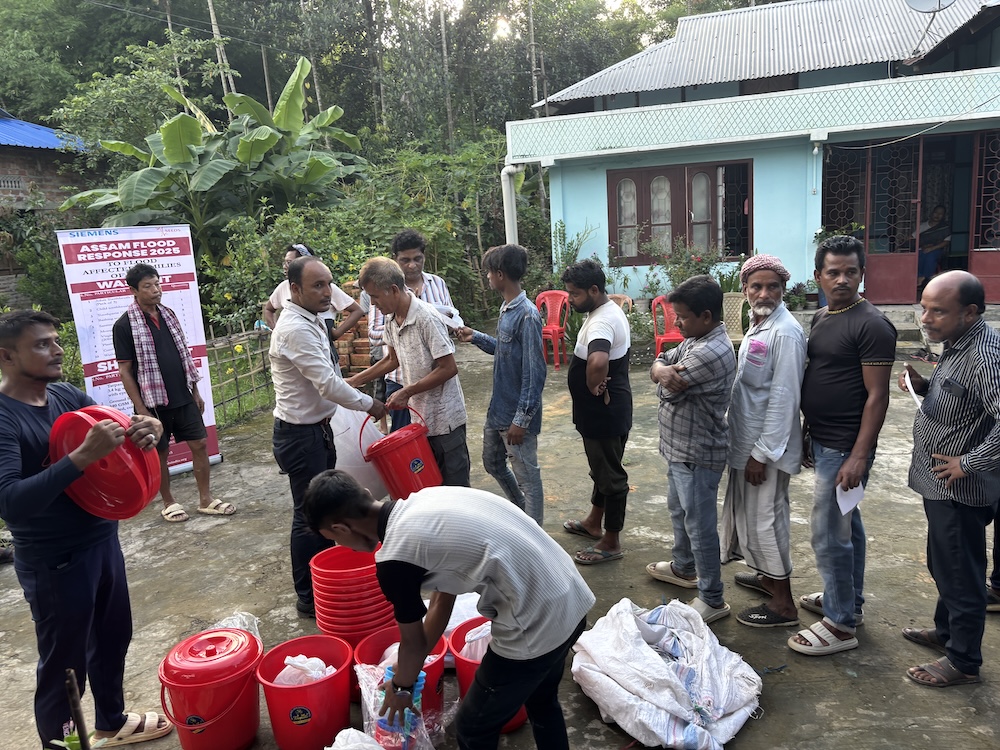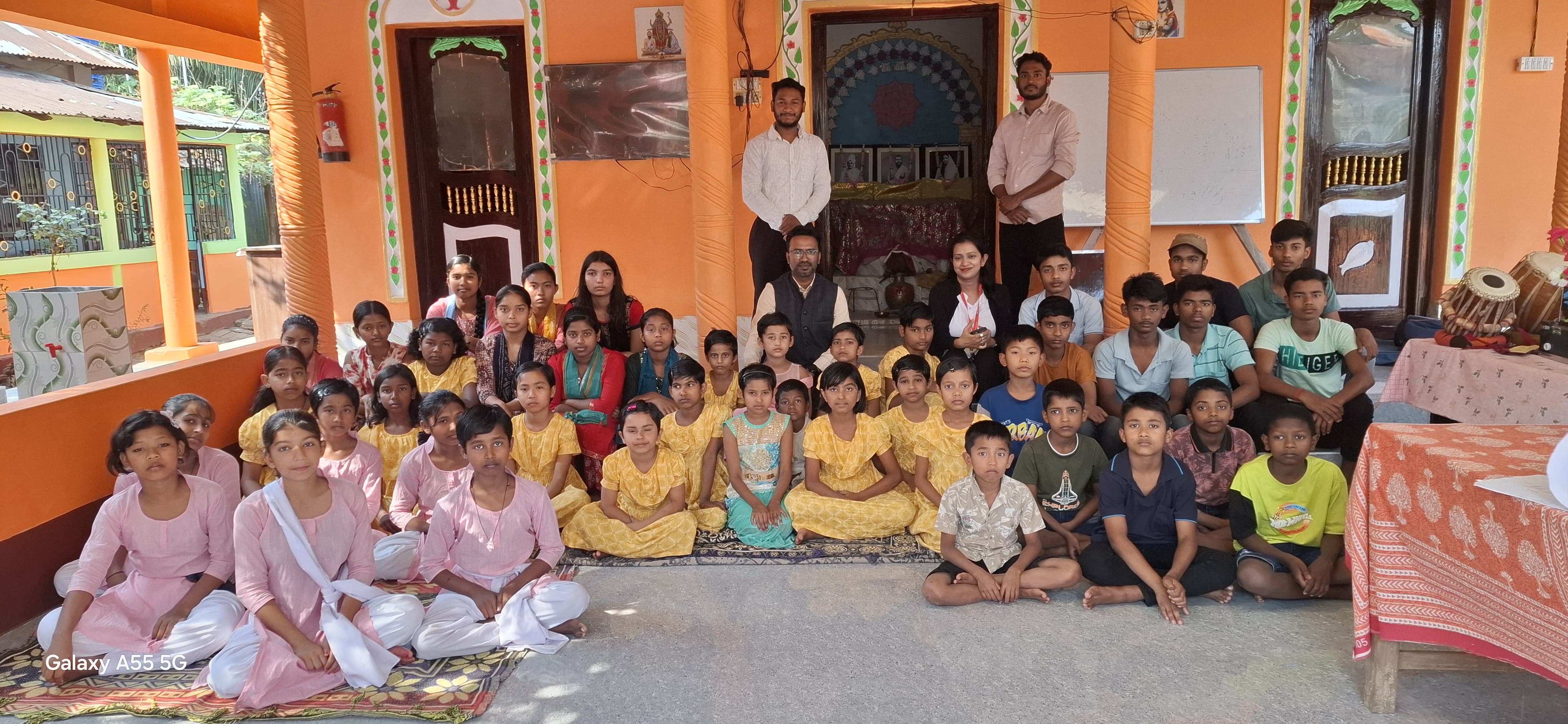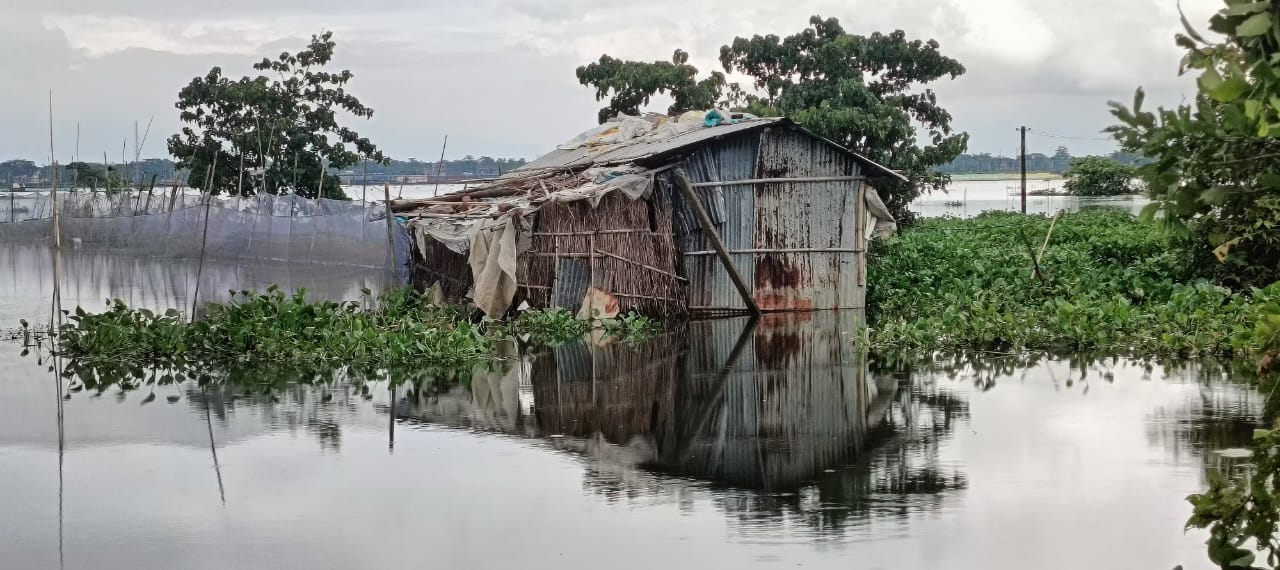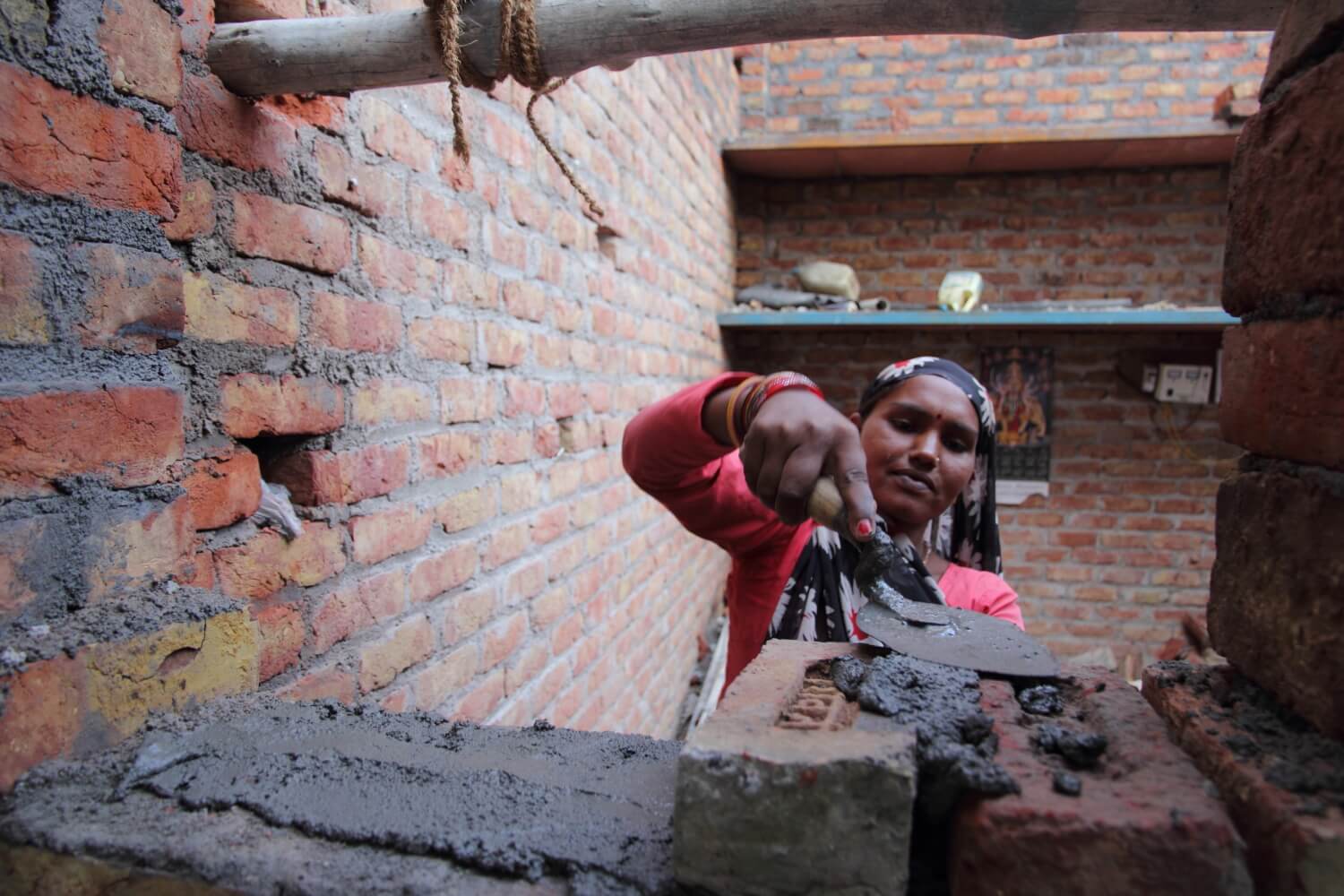Blogs
Storm Lines and Lifelines: Lessons from Cuddalore
Cuddalore in Tamilnadu lives in constant conversation with the sea. Its people understand both the generosity and the threat that come with living on this coast. For them, cyclones are not headlines but lived memories. Introducing a parametric insurance product here was not just about designing payouts based on wind speed triggers. It was about creating a safety net that could be trusted, understood, and accepted by communities that have weathered every cyclone with resilience but also with risk.
Where Technology Met Trust
One thing that shaped this endeavour was technology. We decided early on to use Android-based survey forms for household registrations. It allowed us to move quickly across villages, capture accurate information, and avoid confusion and errors.
None of this would have been possible without my colleague Arvind, who anchored the entire technical backend. The amount of invisible labour that goes into making a simple survey form function smoothly is significant. Arvind quietly kept the system stable even as thousands of entries poured in.
People often assume technology works in isolation, but in Cuddalore, its success was intertwined with trust. When residents saw registration happening smoothly, they trusted the process. When volunteers could explain the digital forms clearly, they trusted the intent. The reliability of the system became a quiet but powerful contributor to credibility.
Community Trust: The Foundation
Technology alone cannot win hearts. Community trust was the real foundation. Our local civil society partner Mr. T. Arulselvam was the bridge, leveraging his network. Volunteers who were from the district were our most valuable link. Households opened their doors to us because they recognised familiar faces.
For many, the idea of a cyclone payout triggered automatically by measured windspeed felt abstract. What made it real was a neighbour explaining it carefully, or a volunteer sitting down with them to go through every question. People asked thoughtful, practical questions:
- What if the cyclone comes but the windspeed is low?
- How fast will the money come?
- Is this really not a government scheme?
Patience and clarity play a big role in fostering understanding. It was in these everyday interactions that gained the initiative its legitimacy.
Wearing Multiple Hats in a Single Day
My own role shifted constantly, often several times in a single day adapting to what the moment demanded. From reviewing IEC poster designs, attending volunteer meetings, where the concepts of parametric insurance would be broken down into simple, relatable examples, or on calls with insurers discussing trigger thresholds or the details of policy clauses.
Navigating between the lived experience of communities and the discussions with insurers was challenging, but instructive. It showed me how critical it was to bring ground realities into technical discussions and technical accuracy into community conversations.
Why This Work Stayed with Me
Looking back, the work felt intense not because we were chasing deadlines, but because every decision mattered. Every name we registered was not just a data point. It represented a household placing trust in an unfamiliar but hopeful idea. Every explanation we gave influenced how people saw risk and preparedness. Every technical choice, from database structures to form design, shaped the integrity of the endeavour.
What made it meaningful was that this work bridged several worlds: climate science, insurance modelling, digital tools, community dialogue, and the simple human desire for security in an uncertain environment.
I often think about the thousands of registrations we completed. Each one was a small act of faith: in us and in the possibility that innovation could serve people without overwhelming them.
Head Centre of Excellence, Public Finance

Fishing harbour, Cuddalore

Volunteers having tea at the end of a long day, Cuddalore
Mitigating the Impact of Heat Waves in Urban India
Rising Heat Trends in South Asia
South Asia stands at the frontline of the global heat crisis. Climate change is driving longer, more frequent, and more intense heatwaves across the region. The IPCC Sixth Assessment Report (2023) identifies South Asia as one of the most heat-vulnerable regions in the world. India faces escalating urban heat stress. The summer of 2024 ranked among the hottest on record, with Delhi surpassing 46°C and the Indo-Gangetic Plain sweltering under prolonged heatwave conditions.
In Indian cities, the impact of this heat is uneven. Poorly planned urban areas trap heat due to the Urban Heat Island (UHI) effect, intensified by concrete, asphalt, and metal roofing that absorb and radiate solar energy. In informal settlements, indoor temperatures can exceed outdoor temperatures by 8–10°C, posing severe health risks for children, the elderly, and women. Recognising the growing danger, the National Disaster Management Authority (NDMA) in India has formally declared heatwaves as a national disaster—an acknowledgement of the urgent need for adaptive, community-centred mitigation strategies.
As world leaders convene at the Conference of the Parties (COP) 30 in Brazil, living in a warmer world and the adaptation mechanisms required are key discussion points. Sustainable Environment and Ecological Development Society (SEEDS) has pioneered a community-centred approach to heat resilience, particularly in the Delhi National Capital Region, that is relevant to the Global South. The significance of these efforts was highlighted recently at the G20 Ministerial Declaration on Disaster Risk Reduction, which endorsed the adoption of ‘Resilience of All’.
Heat Impact on Urban Populations
The Global South is experiencing rapid urbanisation, dense construction, and the loss of green spaces, turning its cities into heat traps. According to the Indian Meteorological Department (IMD), the number of heatwave days in India has more than doubled since 1980. Cities such as Delhi, Ahmedabad, and Hyderabad now endure longer and more intense heat events. Yet, heat does not affect all residents equally—the poor, migrants, and those in informal settlements bear the brunt.
Nearly 65 million Indians (17% of the urban population) live in slums (Census 2011). These neighbourhoods are marked by tin or asbestos roofs, poor ventilation, overcrowding, and little access to shade or open spaces. During peak heat, indoor temperatures often exceed 45°C, even at night. Families living in single-room homes suffer dehydration, sleep deprivation, and heat exhaustion. The absence of reliable electricity or water worsens the crisis, while storing water in plastic containers further increases indoor heat. Rising electricity and healthcare expenses, coupled with declining productivity, deepen economic hardship.
Migrant workers—employed in construction, street vending, sanitation, and delivery services—face extreme exposure to outdoor heat. Long hours under direct sunlight, often without rest or shade, lead to heat exhaustion, dehydration, and sometimes fatal heatstroke. The NDMA (2022) estimates that extreme heat can reduce labour productivity by 15–20%, especially in informal sectors. For daily wage earners, lost workdays mean immediate income loss, pushing families into deeper vulnerability.
Prolonged heat exposure has well-documented physiological consequences: Heat exhaustion, dehydration, and heatstroke (core body temperature >40°C). Exacerbation of cardiovascular and respiratory diseases due to higher ozone and particulate matter. Declines in mental health, sleep quality, and overall productivity.
The World Health Organisation (WHO) identifies urban poor communities as climate-vulnerable populations needing priority adaptation interventions.
Strategies for Mitigating Urban Heat
Reducing the impact of urban heat requires both immediate relief and long-term structural action. Effective strategies span urban design, building innovation, and policy planning.
Urban Design and Green Infrastructure: These include expanding urban greenery: Parks, roadside trees, and green belts provide shading and cooling through evapotranspiration, lowering local air temperatures by several degrees. Restoring waterbodies: Lakes, ponds, and wetlands act as natural coolants through evaporation and convection, moderating urban microclimates.
Reflective and permeable surfaces: Light-coloured pavements and porous materials reduce surface heat absorption and allow rainwater infiltration.
Cities like Ahmedabad, Chennai, and Pune are integrating ‘blue-green infrastructure’ into urban plans—linking parks and lakes to form interconnected cooling corridors.
Building-Level Interventions: Cool roofs: Low-cost methods such as lime wash, reflective coatings, bamboo shading, or rooftop gardens can lower roof surface temperatures by 15–20°C and indoor temperatures by 8–10°C.
Passive design: Features like roof insulation, shaded verandas, and cross-ventilation improve thermal comfort naturally.
Energy-efficient construction: Incorporating reflective materials and green building codes into affordable housing programs like PMAY-Urban can significantly reduce urban heat exposure.
Heat Action Plans and Early Warning Systems: Cities like Ahmedabad, Delhi, and Hyderabad have introduced Heat Action Plans (HAPs) that integrate early warning systems, community outreach, and inter-agency coordination. Policies promoting rest breaks, shaded shelters, and hydration facilities for outdoor workers are essential, alongside medical preparedness for heat-related illnesses.
SEEDS’ interventions combine awareness, design innovation, and infrastructure adaptation to reduce heat exposure among low-income groups.
Starting from community-led awareness, an Under the Umbrella campaign since 2024 supports vulnerable communities during extreme heat. It raises awareness on heat risk, promotes simple cooling methods, and links residents to safe shelters. In Kishan Kunj, an informal settlement in East Delhi, we introduced cool roof treatments using reflective materials and insulation.
Through community networks, heat alerts and educational materials are disseminated in local languages, ensuring households receive timely warnings. Collaboration with community health workers, NGOs, and local leaders ensures consistent messaging on hydration, rest, and protection for children and the elderly.
Further, working with the community, we implemented lime-based cool roof solutions in low-income settlements of northwest Delhi, reducing indoor heat at minimal cost. The organisation also employs AI and GIS tools to map building-level heat risk, using satellite and land-surface temperature data to identify the most vulnerable homes. These insights help target interventions effectively and build evidence for policy replication.
Promoting ‘living laboratories’ where communities co-design and test heat mitigation solutions in areas such as Kishan Kunj, this approach led to shaded streets, insulated walls and roofs, refurbished drinking water facilities, and worker shelters. These interventions not only reduced indoor heat but also enhanced overall liveability, offering a replicable model for other urban areas. At a city level, we recognise the role of urban waterbodies in cooling microclimates. We have restored one lake in Delhi and three in Gurugram, where dense construction had degraded natural cooling systems. These restored sites now help moderate local temperatures and benefit thousands of nearby residents.
Key Insights from Heat Mitigation Exploration
- Built form matters: Tin-roofed, densely packed houses amplify heat stress, underscoring the importance of design-focused interventions.
- Community agency drives success: Once communities experience tangible benefits, they sustain and replicate interventions independently.
- Scaling challenges remain: Pilots demonstrate impact, but large-scale adoption needs policy alignment, urban planning integration, and innovative financing.
- Data enables precision: AI-based heat mapping identifies hotspots and ensures interventions reach those most in need.
- Holistic resilience: Heat interacts with housing quality, socio-economic status, and health—requiring solutions that link infrastructure, awareness, and early warning systems.
Conclusion
To build truly heat-resilient cities, India must integrate these approaches into urban planning, housing policy, and climate adaptation strategies—transforming today’s pilots into tomorrow’s urban standards.
Sustainable, inclusive, and climate-smart design is not just about keeping cities cool—it’s about keeping communities alive.
Director of the Built Environment, Sustainable Environment and Ecological Development Society (SEEDS).



Women at the Frontlines: Why COP30 Must Back Gender-Responsive Nature-Based Solutions
As the world gears up for COP30, SEEDS calls for recognition of women’s leadership in climate adaptation. Across India, women are restoring coastline, forests, managing water commons, and leading early warning systems - yet remain invisible in climate finance and policy.
In India, women spend up to four hours daily fetching water - a task made harder by climate extremes. Yet, they remain invisible in adaptation budgets. Across drought-prone Madhya Pradesh, Maharashtra and Andhra Pradeshthe flood-prone plains of Bihar and the cyclone-hit coasts of the Bay of Bengal, women are disproportionately affected by climate change. Following an extreme climate event, they are also first responders, primary caregivers, and custodians of natural resources. Despite this their voices remain underrepresented in climate discourse and decision-making.
As COP30 convenes to advance the Global Goal on Adaptation, the conversation must place women at its core. Not as passive beneficiaries, but as agents of transformative change. Gender-responsive Nature-Based Solutions (NbS) offer a powerful pathway to achieve this. When women lead, climate solutions become more inclusive, adaptive, and enduring.
Why Gender-Responsive NbS Matter
Gender equality is not just a social goal - it is a climate imperative. The Intergovernmental Panel on Climate Change (IPCC)’s Sixth Assessment Report underscores that women, children, and marginalised groups are among the most vulnerable to climate impacts. Gender-responsive adaptation delivers better outcomes for resilience and equity (IPCC AR6). Research shows that communities where women participate in decision-making recover 30% faster from disasters. Despite this, adaptation financing and policy frameworks still treat gender and resilience as parallel, not integrated, themes.
NbS bridges this gap. By aligning ecological functions with social inclusion, they advance adaptation goals while restoring ecosystems. From water security and soil health to livelihood diversification and local governance, gender-responsive NbS deliver co-benefits that technocratic solutions often miss.
Globally, NbS are increasingly recognised as a game-changer for adaptation. By protecting, managing, and restoring ecosystems -from coastal protection and forestry to regenerative agriculture - NbS strengthen both human and ecological resilience. The Kunming–Montreal Global Biodiversity Framework urges countries to reduce climate impacts on biodiversity through NbS, and 96 updated Nationally Determined Contributions (NDCs) already include them in adaptation plans. Yet financing remains limited: the UNEP State of Finance for Nature Report (2023) shows only about USD 200 billion flowing annually, against a need of USD 436 billion by 2025. Scaling NbS requires closing this finance gap while ensuring improved bankability, community-led, women-driven implementation that links ecosystem integrity with livelihood resilience.
Women-led Preparedness Planning in flood-affected Uttar Pradesh, Bihar, Assam and landslide-prone Kerala and Uttarakhand, has enabled women’s participation in disaster preparedness. Women-led committees now map risk zones, plan evacuation routes, and manage safe shelters. Training them to interpret weather advisories and activate response protocols have reduced delays and strengthened social cohesion during crises.
Women are no longer just beneficiaries - they are planners, communicators, and decision-makers in local resilience systems.
Women are leading regenerative agroforestry in the fragile deltaic landscape of the Sundarbans. Women’s Self-Help Groups (SHGs) champion regenerative agroforestry - integrating salt-tolerant crops with nitrogen-fixing timber and fruit trees. They apply traditional knowledge for zero tillage and organic soil enrichment through composting, vermicomposting, and bio-inputs like Jeevamrit. What began as a livelihood intervention now restores soil health, enhances carbon sequestration, and strengthens food security.Here, women are not just adapting - they are regenerating ecosystems and redefining rural economies.
Women’s collectives are also leading integrated aquaculture and waterbody restoration. They are reviving degraded ponds through desilting and vegetative stabilisation, introducing integrated fish-duck-horticulture systems, seaweed integrated shrimp farming and mangrove integrated carb farming. These efforts ensure water security, diversify nutrition, and reduce migration, turning local commons into living climate buffers.
By converting neglected water commons into productive, climate-buffering systems women are demonstrating that resilience grows from restoration.
In bio-shield and mangrove restoration along Tamil Nadu’s eroding riverbanks and the Sundarbans’ storm-prone coasts respectively, women restore mangrove belts and non-mangrove bio-shields that protect communities from cyclones. Trained in nursery raising and monitoring, they diversify income through sapling sales and eco-enterprises, transforming restoration into a data-backed social movement.
Their work transforms restoration into a data-driven social movement, rooted in stewardship and collective care.
COP30: From Rhetoric to Action
For gender-responsive NbS to scale meaningfully, three systemic shifts are essential. Recognising Women’s Climate Labor that Include unpaid caregiving and ecosystem stewardship in adaptation metrics and budgets.
It is important to design NbS with Gender Co-Leadership to move beyond token participation. Additionally, embed women’s leadership in programme governance.
By linking Women’s Collectives to Finance and Policy we can ensure grassroots innovations inform district and national adaptation plans. Allocate a minimum share of adaptation funds to women-led NbS.
The UNFCCC Gender Action Plan, set for adoption at COP30, provides a critical opportunity to institutionalise these measures and mainstream gender equality across climate governance (UNFCCC GAP).
A Call for Equitable Adaptation
At its heart, climate resilience is about relationships - between people, ecosystems, and institutions. When women lead preparedness, restore landscapes, or manage commons, they bring empathy, continuity, and long-term stewardship that top-down solutions often miss.
COP30 is our chance to turn rhetoric into resilience. Gender-responsive NbS are not peripheral add-ons - they are central to building equitable, nature-positive futures. If we fail to put women at the center of adaptation, resilience will remain a half-built bridge.
Global Context:
- The IPCC emphasises that gender-responsive adaptation reduces vulnerability and enhances resilience (IPCC AR6).
- The UNFCCC’s new Gender Action Plan aims to embed gender equality in climate policy at COP30 (UNFCCC GAP).
- World Bank data warns that climate change could push 158 million more women into poverty by 2050 unless gender and finance are integrated into adaptation strategies (World Bank 2023).
- Only about USD 200 billion of the USD 436 billion needed annually is flowing towards NbS - scaling requires inclusive, women-led investment UNEP (2023).
Centre of Excellence, NbS, SEEDS


Inspiring learning and DRR preparedness
On September 17, 2025, I set out to find the Modern Senior Secondary School in Gangtok, East Sikkim, to replace a damaged Automatic Weather Station (AWS) that SEEDS had installed in 2023. It had been damaged in a fire. A day earlier, I was part of the efforts by SEEDS to install an AWS at the State Emergency Operation Centre of Sikkim State Disaster Management Authority (SSDMA) as part of our Microsoft project.
Relying on Google Maps again, despite the memory of the previous day when I had lost my way, my worry soon ended as a group of students passed by, and their ID cards revealed the school’s name. I just followed them.
Ahead of the current assignment, I recalled team discussions in Delhi that in 2023 SEEDS had already set up a smaller unit at this school in Sikkim and my visit was an opportune moment to check the status of the earlier work too.
For the students it was not just the installation of a machine; it was science unfolding before their eyes, sparking curiosity, joy, and a sense of pride that their school was once again connected to the rhythms of the sky.
During the installation, three or four teachers also showed interest and gathered around with genuine curiosity, asking about the instrument and its practical applications. They asked questions about how the AWS worked, what kind of data it could generate, and how it might be helpful for both students and the wider community. Their curiosity reflected not just professional involvement, but also a personal enthusiasm for bringing science closer to the classroom.
As I looked around, I noticed the school had showcased some traditional weather manual instruments. These older tools remained valued and were a reminder earlier journeys. The presence of both the preserved manual instruments and the newly installed AWS felt symbolic, like a bridge between the past and the present, blending heritage with technology for the next generation of learners.
As the AWS installation neared completion, technology was woven into the school environment. The outdoor unit, carefully mounted in the open, housed an array of sensors designed to monitor the atmosphere quietly.
From measuring wind speed and direction to tracking temperature, humidity, rainfall, ultraviolet rays, and even solar radiation, it stood as a silent but powerful witness to the changing skies over Gangtok. Inside the school, a console in the Principal’s room came alive with numbers, charts, and forecasts, translating the invisible language of the weather into something the human eye could instantly grasp.
The console not only displayed real-time data streaming in from the outdoor sensors but also offered short-term weather predictions, bridging science with everyday relevance. An added layer was that it had its own indoor sensors that recorded the temperature and humidity of the room in which it sat. The Principal’s office was thus a mini weather hub, connecting the indoors with the world outside.
Replacing the weather station at Modern Senior Secondary School turned out to be much more than a routine task. It brought a spark of excitement to the campus, where science suddenly felt real and within reach.
With live weather data streaming right in the school, it has its own window to the skies. Students can now observe the environment unfold in numbers and patterns, making learning a far more interactive experience. The new station became not just a device, but a source of curiosity, pride, and inspiration for everyone around.
It was World Ozone Day, and the children were learning about the importance of protecting the planet. The scene left me captivated. It was not just another school morning. It felt like a celebration of nature, knowledge, and responsibility.
Principal Mala Jigdal Dorjee shared witnessing the installation during the school’s World Ozone Day celebration, making the moment even more meaningful. The students now feel a sense of ownership and pride, seeing science come alive again on their campus.
As I left the school, I reflected on SEEDS’ earlier journey and how we had moved forward with the hope that such early warning systems would be able to save lives.



Quiet Innovations: Women Leading the Way in Heatwave Resilience
Heatwaves are no longer rare. From Athens to Ahmedabad, Phoenix to Patna, record-breaking summers are now a global reality. Rising temperatures and rapid urbanisation are intensifying risks, especially for those with the least access to cooling.
In India, this is a defining climate challenge. Heatwaves arrive earlier, last longer, and push cities like Delhi to some of the highest urban heat indices worldwide. Informal settlements, characterised by tin or asbestos roofs and inadequate ventilation, leave millions at risk of exposure.
In one such Delhi settlement, I met Premvati, whose quiet innovation spoke volumes. With no financial or other support, she had grown creepers across her tin roof with just her grit and care. What seemed ordinary was adaptation in action: vines shielding her roof from the sun, cooling the room below, and yielding vegetables she shared with neighbours. In a community without formal cooling, hers was both a matter of survival and leadership.
Her story mirrors SEEDS’ work on resilience, early warning systems, passive cooling pilots, policy design, yet reminds us that resilience is also being prototyped at the margins. Embedding these women-led solutions is as vital as the large-scale programmes we design. Many such lived experiences are part of SEEDS’ ongoing work on climate resilience and urban adaptation. As a knowledge partner to the Delhi Heat Action Plan, SEEDS is committed to bridging science with citizen experience, ensuring that resilience strategies are both technically sound and deeply rooted in community realities.
Women as the First Responders of Climate Adaptation
Across India’s hotspots, women are often the first to experience the heat and therefore the first to seek solutions. As caretakers of the young and elderly, their solutions – such as rooftop creepers and water-sharing networks - may not crack the ‘innovation’ label, but they embody resilience. Yet, they remain invisible in climate strategies. Ignoring them risks creating responses that are technically sound but socially incomplete.
For organisations like SEEDS, the opportunity lies in bridging lived ingenuity with formal governance.
Bridging Science and Citizen Experience
As a knowledge partner to the Delhi Heat Action Plan, under the National Disaster Management Authority and the Delhi Disaster Management Authority, SEEDS strengthens early warning, awareness, and preparedness. But the local wisdom of communities pushes us to go further:
- How do we embed lived, indigenous solutions into formal planning?
- What is lost when women-led adaptation is overlooked?
- Can resilience be co-created, not just delivered?
Towards Community-Rooted Heat Action
Resilience cannot be imported; it must be grown from the ground up. Recognising and resourcing local adaptations reduces risk, validates lived knowledge, and builds social bonds. In the shade of one woman’s vines lies an approach that is contextual, inclusive, and rooted in dignity.
A Shared Mandate for the Future
As Delhi faces harsher heatwaves, climate action must shift from consultation to co-creation. Informal settlements must be seen not only as vulnerable but as sites of knowledge. Women’s everyday innovations should be integrated into systemic planning.
One woman’s vines are not an anecdote, they are a blueprint: quiet, persistent, profoundly human. What Delhi does today can guide cities worldwide tomorrow.
The author anchored SEEDS’ ongoing work on climate resilience and urban adaptation. As a knowledge partner to the Delhi Heat Action Plan, SEEDS is committed to bridging science with citizen experience, ensuring that resilience strategies are both technically sound and deeply rooted in community realities.
The untold story of the Himalayas
The Himalayas have always been a source of pride for their residents, a place of beauty, resilience, and belonging. Yet, for those who call these mountains home, pride walks hand in hand with fear. Life here is breathtaking, but also fragile, for every day carries the weight of uncertainty.
Though my work has taken me to a metro city, my heart still lingers in the mountains I call home. My mother works and lives alone in a house built during the British era, while my father works in a different location. The structure of the house my mother stays in is weak, untouched by modern safety measures. Behind it rests a giant boulder, silent yet threatening and a constant reminder that disaster can strike anytime without warning.
My mother often voices the thoughts she cannot escape: What will happen to the house if a landslide happens? Will I even survive? Who will know where I am? These are not fleeting worries, but everyday realities etched into the lives of Himalayan families.
For us, rains are not the cosy days others imagine. Of sipping tea with fritters by the window. In the Himalayas, each downpour is laced with dread. It may mean a landslide thundering down the slopes, a flash flood sweeping away bridges, a cloudburst drowning villages, or a rockfall suddenly blocking the way.
Even a simple trip downhill to the local market can suddenly become impossible. When all approach roads are cut off, shelves run empty, milk and poultry vanish, and families are left clinging to substitutes, milk powder for tea, dried food to fill empty stomachs, and the small comfort of vegetables from kitchen gardens.
National Highways, meant to connect our hills to the larger cities, often remain blocked for days, worsening the scarcity. Over time, we have learnt to stock essentials like onions, potatoes, and pulses. Yet no preparation can erase the fear of being stranded.
What makes it worse is that these calamities are no longer rare. In recent years, they have multiplied. While nature has always shaped the mountains, human actions have deepened the wounds. In the name of development, fragile slopes are carved for roads, hotels, and buildings, as though these young fold mountains can bear the burden forever.
Tourism brings money, but at what cost? Forests are stripped, hills are blasted, and reckless construction leaves scars that turn short-term gains into long-term threats.
For the local population, every landslide, whether in their own village or hundreds of miles away, feels personal. It is a reminder that we may be next. Yet, people endure. The mountains may test their strength every day, but their spirit refuses to crumble.
Life here is not merely about surviving disasters; it is about carrying on despite them. That is what makes the Himalayan people remarkable: they live in fear, but even more, they live in courage.
Engagement and Partnership Support Officer



Reimagining Public Finance for a Resilient Future
Imagine a scenario during the monsoon season where cloudbursts devastate Himalayan hill stations, while within a short span of time, flash floods paralyse locations across the Delhi-National Capital Region. These cannot be treated as isolated incidents anymore and are rapidly becoming India's new normal. Consequently, the question that keeps policymakers awake at night is not just when the next disaster will strike, but how the mounting recovery costs will be mobilised.
Traditional funding approaches are buckling under the pressure of increasingly frequent extreme weather events. The scale and frequency of these climate change-driven disasters are rapidly outpacing our public disaster relief and mitigation funds' ability to cope. This emerging reality demands a fundamental reimagining of how India finances its climate resilience.
The Twin Challenges
The challenge for the nation is two-fold: building the right type of resilient infrastructure for disaster prevention and mitigation and developing the capacity to fund these ventures at scale.
This includes creating the right mix of nature-based solutions such as restoring floodplains and lakes, as well as increasing urban green cover. Alongside this, the Indian government must budget for infrastructure construction and maintenance from the outset to avoid the costly 'build–neglect–rebuild' cycle that traps most Indian infrastructure development.
Unlocking the Power of Markets
India can finance resilient infrastructure at scale using innovative climate finance mechanisms that go beyond traditional funding sources. This includes leveraging bond markets, insurance innovations, carbon credits, and emerging financial instruments that recognise the economic value of resilience-building activities.
The bond market offers tremendous potential, as demonstrated by the Indore Municipal Corporation's 2023 green bond, which attracted ₹720 crores in bids, nearly six times the base issue size. This overwhelming response signals strong investor appetite for climate-focused investments.
Smaller and mid-tier cities do not have to go it alone. They can raise money together through shared funding arrangements that spread risk and lower costs by accessing the bond market. Tamil Nadu's Water and Sanitation Pooled Fund's 2002 issuance of a 15-year pooled bond worth ₹304.1 crores for 13 municipalities and town panchayats exemplifies this approach, helping smaller local governments access long-term financing and setting a replicable model for India's infrastructure sectors.
The next step should be incorporating climate resilience metrics directly into these bonds, making infrastructure investments eligible for green and climate bonds while ensuring they can withstand future climate risks.
Disaster Risk Transfer Potential
Risk transfer mechanisms represent another crucial dimension of climate finance. Parametric insurance provides rapid payouts once specific disaster-related triggers, such as wind speed or rainfall levels, are reached, eliminating the need to assess the extent of the loss after the fact.
Jan Sahas’ implementation of parametric insurance for migrant workers in Noida, in collaboration with Digit Insurance and KM Dastur, demonstrates how such instruments can provide crucial social protection measures against extreme heat during summer by offering insurance payouts on days when temperatures exceed the agreed temperature trigger threshold.
Nature as a Revenue Generator
India can also monetise nature-based solutions by earning carbon credits through measuring carbon captured by restoration initiatives and selling these credits for additional funding. The Gujarat Forest Department's carbon credit MoUs worth ₹2,217 crores through mangrove plantation perfectly illustrates this potential.
These nature-based solutions deliver multiple dividends: providing physical protection against storms and floods, creating economic opportunities that support local livelihoods, generating revenue streams that ensure long-term sustainability, and offering ecosystem services that benefit entire regions. Climate finance mechanisms can further support ecosystem service payments, blue bonds for coastal restoration, and innovative structures that recognise the full economic value of natural infrastructure.


Key Takeaways for Climate Finance Innovation
1. Diversify Funding Sources: Move beyond traditional government budgets to leverage bond markets, insurance innovations, and carbon credit mechanisms.
2. Embrace Collaboration: Pooled financing arrangements enable smaller cities to access capital markets while spreading risk across multiple jurisdictions.
3. Speed Matters: Parametric insurance and anticipatory governance systems enable rapid resource deployment when disasters strike, reducing recovery costs and human suffering.
The Path Ahead
The transformative potential lies not in any single instrument, but in creating integrated financing approaches that combine these mechanisms strategically. Imagine anticipatory governance systems that can rapidly deploy resources when risks materialise, coupled with just transition financing that helps communities adapt their livelihoods as climate conditions evolve. This new imagination for climate finance recognises that building resilience requires not just protecting against known risks but creating adaptive capacity to respond to an uncertain future.
Head - Centre of Excellence, Public Finance



A Home That Moves: Building Climate Resilience, One Shelter at a Time
No, this isn’t a scene from Up, where Mr. Carl floats his house to paradise using balloons. This is real — and it's happening right here in the Delhi National Capital Region - homes that can actually be moved. Every monsoon, waters rise and makeshift shelters – homes to many - vanish. Families lose everything — again. Rebuilding becomes a way of life.
So, SEEDS flipped the narrative.
Floods in Delhi NCR have become increasingly extreme due to rapid urbanisation, poor drainage, and climate change, with the July 2023 deluge pushing the Yamuna River to a 45-year high of 208.66 metres, well above the danger mark of 205.33 meters. Over 25,000 people were displaced, infrastructure was severely damaged, and economic losses exceeded ₹1,000 crore.
The worst-hit were vulnerable communities living in informal settlements along the floodplains, where survival is a daily battle. For these urban poor, many of them daily-wage labourers in nurseries, fields, or construction, makeshift shelters are swept away year after year, forcing families to rebuild their lives from scratch with each flood. This cycle of repeated displacement, livelihood loss, and uncertainty inflicts deep psychological stress, particularly on women and children. These realities underscore the urgent need for climate-resilient infrastructure—especially safe, adaptive housing—and integrated support systems that address both physical vulnerability and long-term psychosocial resilience.
When SEEDS first surveyed the area, we noticed more than physical displacement. There were critical gaps in WaSH (Water, Sanitation and Hygiene), rising incidences of disease, and worsening emotional trauma, especially among women and children. Access to health services was minimal. Infrastructure solutions — permanent embankments, stormwater systems — required long-term government action.
So we asked: what can we do right now?
The answer lay in moving with the people — literally.
The Movable Shelter: A Lego-Like Innovation for Climate Resilience



From Left to right:1. A transitional shelter by SEEDS, thoughtfully placed amidst greenery; 2. A shelter shaded by trees, offering added protection from the heat; 3. Interior view of the shelter, designed to comfortably accommodate a family. Source: Clicked by and for SEEDS
SEEDS designed a modular, dismantlable A-frame shelter made from locally sourced bamboo, steel, and GI sheets. Each unit could be taken apart, moved, and rebuilt in under three hours. When flood forecasts are announced, families can now dismantle their homes and reassemble them in safer, higher ground, saving not just lives, but belongings, dignity, and peace of mind.
This wasn’t just a technical intervention — it was a process of empowerment.
In 2023, we worked with 65 of the most vulnerable households to co-create these structures. The community didn’t just receive the shelters — they built them, learning every nut and bolt, every interlocking piece. Much like assembling an IKEA piece, the process made the homes personal, valued, and cherished.
“We used to feel like we were always starting over,” one resident shared. “But now, we move forward together — and we’re not alone anymore.”

These structures, positioned thoughtfully under trees for shade and built with climate-conscious materials, have also proven effective in heatwave conditions. A simple shelter, but one with a transformative effect.
When a solution is not just accepted but adopted — that’s when we know we’ve hit on something powerful: a scalable, replicable, and community-owned model of climate resilience.
In a world where climate change hits the underserved the hardest, we must think beyond concrete. We must think in motion.
At SEEDS, we're not just building shelters — we're building confidence, dignity, and hope.
Because resilience doesn't mean staying still. Sometimes, it means moving forward — together.
Technical Proposal Manager, SEEDS
Blending data and inherited knowledge
Sundarbans, the largest mangrove in the world, faces degradation due to climate change that also impacts human lives. The degradation of this guardian ecosystem has weakened in the face of intensified cyclones leaving communities unguarded. To safeguard communities, several mangrove plantation efforts have been undertaken.
However, saplings often fail to take root when natural water flow is blocked or altered. Planting wrong species for the local soil and salinity, inadequate land preparation, using a plantation technique that does not match with the tidal zones, or overlooking the importance of long-term maintenance and community involvement lead to failed attempts.
The ghost of failed mangrove plantations tells quiet but powerful stories. Rows of withered saplings, choked by increasingly saline water or changing hydrology, stand as a testament to good intentions gone awry. The simple act of planting a tree - often seen as the solution, is the first step in a complex journey.
As an intern at SEEDS, I sought to understand the entire path from planting to survival. In the Sundarbans, where the landscape is constantly shifting, the question was: “How do we give the mangroves the best chance to thrive?’’
Getting the Foundations Right
A scientifically planned restoration moves far beyond simple planting by integrating several critical factors to ensure long-term success. The most vital element is hydrology; it is crucial to first restore natural water exchange. Fixing the hydrology increases the survival rates to 70–90 percent a stark contrast to the 10–20 percent survival seen in planting-only efforts.
This is because proper tidal flow prevents water stagnation and ensures the soil is suitable for young trees. Success also hinges on carefully matching the right mangrove species to the right place, considering local salinity and soil conditions. For instance, freshwater-loving species, which are better at storing carbon, are chosen for less salty areas, while salt-tolerant species are planted where salinity is high.
The timing of the plantation too is crucial. Planting is best done after the monsoon season, when weaker tides provide saplings a better chance to anchor themselves firmly. Finally, the restoration must adapt its techniques to the local landscape. In high-salinity and high-tide zones, ‘fishbone’-shaped canals are dug to improve water flow; the ‘riley-encased’ method of plantation is used for low-tide zones; while on erosion-prone coastlines, native grasses are sometimes planted first to stabilise the soil, acting as a ‘nurse’ for the mangrove seedlings that follow. This multi-faceted approach, combining hydrological correction with strategic planting, ensures that restoration efforts create resilient forests that thrive for years to come.
Ground-Truthing the Approach
A field visit was essential to test and refine this approach. I visited Kultali Block in the Sundarbans where the SEEDS mangrove restoration project is being implemented. I visited two plantation sites. One completed in Maipit Baikunthpur Gram Panchayat and another in Gurguria Bhubaneswari Gram Panchayat yet to be planted.
Speaking to a group of around six-eight women, I found out that the people in the Sundarbans are dependent on the forests for up to 70 percent of their total income. There are three months of the year- April, May and June when people are restricted from entering the forest. During these months, people rely on animal husbandry and other sources of income. Animal grazing is a persistent problem everywhere in the Sundarbans and one of the main problems impacting plantations.
The human cost of climate change is felt acutely in this landscape – the daily struggle for both their lives and their rich legacy. The lives of 4.5 million people living there are intertwined with the ecological well-being of the Sundarbans. Their active participation in planting and, more critically, being involved in maintaining the saplings, is driven by a deep-seated motivation to safeguard their community and ecology.
Speaking to local experts to compare different potential restoration sites based on the crucial indicators were helpful and this led to a crucial insight: the best approach would be a hybrid one. We could use objective, measurable data from tools like satellite mapping for factors like elevation, slope, soil salinity, tidal inundation frequency, and historical water flow.
To this we could weave in the community’s knowledge to understand the context that data cannot provide—the history of past failures, subtle soil changes, mangrove species that historically existed there, or which areas are most important to them for protection from cyclones and storm surges. By blending data with lived experience, we can create a more accurate and respectful approach, ensuring that our efforts are truly aligned with the needs of the Sundarbans and its people.
Successful restoration is not a choice between data and inherited knowledge, but a synthesis of both. This evolving hybrid model weaves together factual data and lived experience. A scientifically planned mangrove restoration addresses hydrological needs to guarantee regular tidal flow, informs the optimal timing of plantation, and even tailors the planting method according to different tidal regions.
Lasting mangrove restoration is rooted in thoughtful site selection, scientific rigour, practical techniques, and meaningful community engagement. This integrated approach not only increases the survival rates of plantations but also delivers lasting ecological, economic, and social benefits—helping secure the Sundarbans’ future for both people and nature.
Intern at SEEDS, Summer 2025 studying public policy at the Indian Institute of Technology, Delhi.

Plantation site in Maipit Baikunthpur GP during low tide

Plantation site in Gurguria Bhubaneswari GP during mid tide
Guardians of the Coast: Implementing Non-Mangrove Bio-shields in Tamil Nadu
In April 2025, I had the opportunity to visit Tamil Nadu’s southeastern coastline as part of an ongoing initiative to assess feasibility for non-mangrove bio-shield interventions. These site visits spanned multiple coastal districts, focusing on understanding the local ecology, engaging with communities, and evaluating areas for implementing nature-based climate resilience solutions.
The mission was clear: identify locations where green buffers—beyond just mangroves—could shield lives, livelihoods, and ecosystems from intensifying climate threats, while aligning with SEEDS’ core pillars of resilient habitats, future-ready communities, protecting the most vulnerable, and enabling scalable innovations.
What is Non-Mangrove Bio-shield or Shelterbelt?
As per a 2009 article by Tanaka et al., a bio-shield is defined as an intervention that “enhances the ability of the natural ecosystem to protect people and their livelihoods by conserving, managing, and restoring coastal vegetation, wetlands, mangroves, spawning areas, sand dunes, sea-grass beds, coral reefs, and other coastal environments”. Usually bio-shields can broadly be categorized as mangrove / non-mangrove bio-shields.
A non-mangrove bio-shield is a strip of trees and shrubs planted along the coast to protect against high winds, salt spray, and natural disasters. These are also known as shelterbelts. These serve as natural infrastructure, protecting vulnerable settlements from erosion and floods, while also creating biodiversity habitats, sequestering carbon, and offering potential for sustainable harvesting and agroforestry.
A Living Example: Pulicat Bio-shield (2009)
A remarkable success story lies just north of Chennai, in Pulicat, where a bio-shield project was implemented by SEEDS in 2009. Over 9,000 saplings—including native species suitable for coastal zones—were planted along the shoreline. What was once a bare, exposed stretch of coast has now grown into a dense greenbelt, resembling a forest in its maturity and diversity.
The species initially selected for planting—Casuarina, Coconut, Pugamia, Thespesia, and Neem—were chosen for their coastal resilience and multi-use potential. In the years that followed, community members added the Udayam tree, a native species recognized for its cultural significance and environmental adaptability.

The Bio-shield initiative of 2009 in Pulicat, Tamil Nadu and its status today
The greenbelt has now matured into a dense and biodiverse zone, resembling a natural forest in structure and function. It not only offers physical protection from climate hazards but has also opened doors to agroforestry, with undergrowth supporting fruit-bearing plants, herbs, and native grasses. Communities are now exploring income-generating avenues through sustainable harvesting and ecosystem stewardship.
Inspired by Pulicat’s transformation, several neighboring villages have initiated similar shelterbelt efforts through government schemes like MGNREGA. These efforts integrate traditional knowledge, livelihood generation, and ecosystem restoration—affirming that nature-based solutions can be scalable and community-driven.
SEEDS’ Vision: Resilience, Rooted in Nature
At SEEDS, we believe that resilience begins with people—and thrives with nature. Our vision for coastal resilience in Tamil Nadu is deeply anchored in community-led, nature-based solutions that respond to the growing climate vulnerabilities of the region. We seek to integrate science with grassroots knowledge, pairing geospatial data and risk mapping with local priorities and traditional ecological practices.
Through initiatives like bio-shields, hybrid ecological infrastructure, and adaptive livelihoods, we aim to foster long-term safety, sustainability, and dignity for coastal communities.


The Bio-shield initiative of 2009 in Pulicat, Tamil Nadu and its status today
Source: Clicked by and for SEEDS
This is not just about protection—it's about regeneration. It’s about ensuring that every intervention, whether a line of trees or a patch of seaweed, contributes to a more equitable, climate-smart future.
The goal is not just to plant trees—but to plant resilience. Projects like Pulicat show us what’s possible when natural systems are given space to grow and communities are empowered to nurture them.
As we move ahead, let’s walk with the coast—listen, learn, and plant for the future.
“In every seed lies a story of survival—and a promise to the coast. When communities plant, protect, and prosper together, resilience is no longer an aspiration. It becomes a living, growing reality.”
Technical Proposal Manager, SEEDS
Embracing Conservation and Sustainable Practices
A Commitment to Our Planet’s Future
As the world grapples with the escalating impacts of climate change, pollution, and natural resource depletion, the need for environmental stewardship has never been more urgent. In India, these challenges are amplified by a large population, increasing urbanisation, and socio-economic vulnerabilities. Addressing them requires a paradigm shift from reactive responses to proactive, inclusive, and sustainable solutions, rooted both in policy and practice.
Preserving Natures Heritage
Conservation is more than the protection of wildlife or iconic landscapes—it is the protection of the essential ecosystems that support life and livelihoods. According to India's National Action Plan on Climate Change (NAPCC), particularly the National Mission for a Green India, afforestation and ecosystem restoration are key to enhancing carbon sinks and improving ecosystem services.
The National Disaster Management Authorities (NDMA’s) National Disaster Management Plan (NDMP) emphasises the importance of ecosystem-based approaches to disaster risk reduction, advocating for the protection of mangroves, wetlands, and forests as natural buffers against climate-related disasters.
SEEDS, through its community-driven restoration efforts in flood-prone and coastal regions, has demonstrated the value of ecological conservation. For instance, SEEDS' work in Odisha post-Cyclone Fani included not just shelter reconstruction but ecosystem restoration and green rebuilding, involving mangrove regeneration to reduce storm surge impacts.
Living Within Our Ecological Means
Sustainability requires embedding long-term environmental responsibility into daily practices—across housing, energy, agriculture, waste management, and urban development. India’s State Action Plans on Climate Change (SAPCCs) encourage region-specific sustainable strategies, supported by the National Electric Mobility Mission, UJALA, and Swachh Bharat Abhiyan.
SEEDS has been at the forefront of green and resilient infrastructure development, that include reconstructing eco-friendly schools and health centers in disaster-prone areas of Assam, Odisha, Bihar, West Bengal, Himachal Pradesh, Uttarakhand, and Jammu and Kashmir. These buildings have incorporated solar energy, rainwater harvesting, and locally sourced materials, demonstrating how low-cost, high-impact sustainable solutions can not only be mainstreamed but be built back with more resilient features.
Moreover, SEEDS’ Safe Schools programme, recognised under the Sendai Framework for Disaster Risk Reduction, integrates sustainability and safety through community co-design, ensuring that infrastructure not only meets ecological standards but is owned and maintained by local communities.
Communities at the Core of Change
India’s National Policy on Disaster Management (NPDM) 2009 highlights the central role of communities in disaster preparedness and response. NDMA’s Community-Based Disaster Management (CBDM) framework reinforces this, promoting indigenous knowledge, capacity building, and local leadership.
SEEDS has been able to operationalise this principle by placing communities at the heart of every intervention. In Assam and Tamil Nadu, SEEDS facilitated Participatory Risk Assessments to co-design early warning systems, and in Delhi’s urban slums, it enabled community-led climate resilience mapping, addressing urban heat and water stress through grassroots innovation.
These initiatives align with India’s updated Nationally Determined Contributions (NDCs) under the Paris Agreement, which stress people-centric climate action, and the need for convergence between national commitments and ground-level realities.
A Consortium for Localised Climate Action
To address the loss and damage experienced by vulnerable populations—particularly in India’s ecologically fragile zones—there is a pressing need to move beyond high-level commitments toward locally-led implementation. A practical, inclusive, and demand-driven mechanism is vital.
At the core of this approach is a multi-stakeholder consortium model, which SEEDS is helping to incubate. This includes:
- Facilitating the articulation of local needs,
- Building institutional capacities,
- Linking community action with policy and unlocking finance
- Enabling access to public and philanthropic resources
Such efforts complement India’s disaster risk financing roadmap and Resilient Cities Programme, while operationalising the ‘Sendai Framework’s Priority 4: Enhancing Disaster Preparedness for Effective Response’.
Conservation and sustainable practices are not isolated activities but an ongoing, collective process of transformation. In the face of escalating climate risks, especially in vulnerable regions like the Sundarbans, Western Ghats, or the Himalayan foothills, enabling resilience at every level—individual, community, institutional, and systemic—is essential.
With a shared vision, coordinated action, and community-led implementation, we can bridge the gap between policy intent and lived reality, ensuring that India’s development pathway remains climate-resilient and environmentally just.
It starts now. It starts with all of us.
SEEDS Regional Director



Serving where it is needed the most
In May this year Assam experienced the highest rainfall in India’s recorded history since 1901. By June 2, over 5,15,039 people had been affected in the State, 12,610 hectares of cropland had been damaged, and 793 animals swept away. Twenty-two of the State’s 35 districts were impacted. Assam’s flood crisis remains dire, with more than 2.6 lakh people affected, and Lakhimpur, Cachar, and Sribhumi among the worst hit.
Since June 20, 2025 the SEEDS emergency team has been in village Gosaipur of Udharhband and Sonai Block of the most affected blocks of Moinarbad district supporting communities – just to survive. The team spoke to some who were not only affected by the floods but also had additional vulnerabilities such as ill health, disabilities or no place to call home.
Champarun Nessa Bharbuiya remembers the incident sitting outside in the verandah of her house. She tearfully recalls spending 17 days in her tin roofed verandah following the flood. Her verandah which is about four feet higher than her house, was the only place she could move to for safety - as her house gradually filled up with five feet of water.
A cancer patient, Champarun’s struggles are many. Last month she lost her husband who was the sole bread winner. With the flood waters in the house, she along with her son, her daughter and her grandson have survived so far on food offered by their neighbours. Currently unable to seek medical help due to her financial condition. She hopes that someday she will be able to get well and start earning to look after her family.
Kulsuma Begum Laskar resides in a rented 10x12 tin structure on the boundary of the village Gosaipur part 5, near the Moinarbad railway station. Her husband Sujjad Ali Laskar is the sole bread winner for a family of seven. Kulsuma lives along with her husband, four sons and a daughter. Following the flooding, she recalls spending 18 days with her family in a makeshift tent they built on the railway station to survive. With no access to drinking water, food, hygiene and shelter, the family had to rely on community help.
Kulsuma says, “This is a recurring issue for us. At least three times a year we must move out to live on higher elevation during floods.”
Abdul Jalil Talukdar, 77, was born with a physical disability. He says, “I have spent most of my life moving around the village. But I have not been able to find a place that doesn’t flood!” His wife runs a petty shop and is the bread earner for the family of four, including his daughter and grandchild as Abdul is unable to walk or work now. He says his family woke up to two feet of water outside during the flood. Hoping the water would recede they stayed inside. By the evening it had risen eight feet high forcing them to go to a higher elevation. The local temple club helped them with rations for eight days, however since returning to their home is still a long time away they needed a makeshift shelter.
All these families are among the 400 that have received shelter and WASH kits over the past few days. While Champarun’s daughter Arjan Ali Laskar plans to use the tarpaulin from the kit to seal the roof from leaks, Kulsuma’s family says the shelter kit-tarpaulin will help them make a temporary roof, and mats will be used to sleep on.
For Abdul Jalil Talukdar’s family the shelter kit’s tarpaulin and mat would help them make a temporary roof to try to check any leakage. However, Abdul says “We long for a water filter that can be used during any such event!”
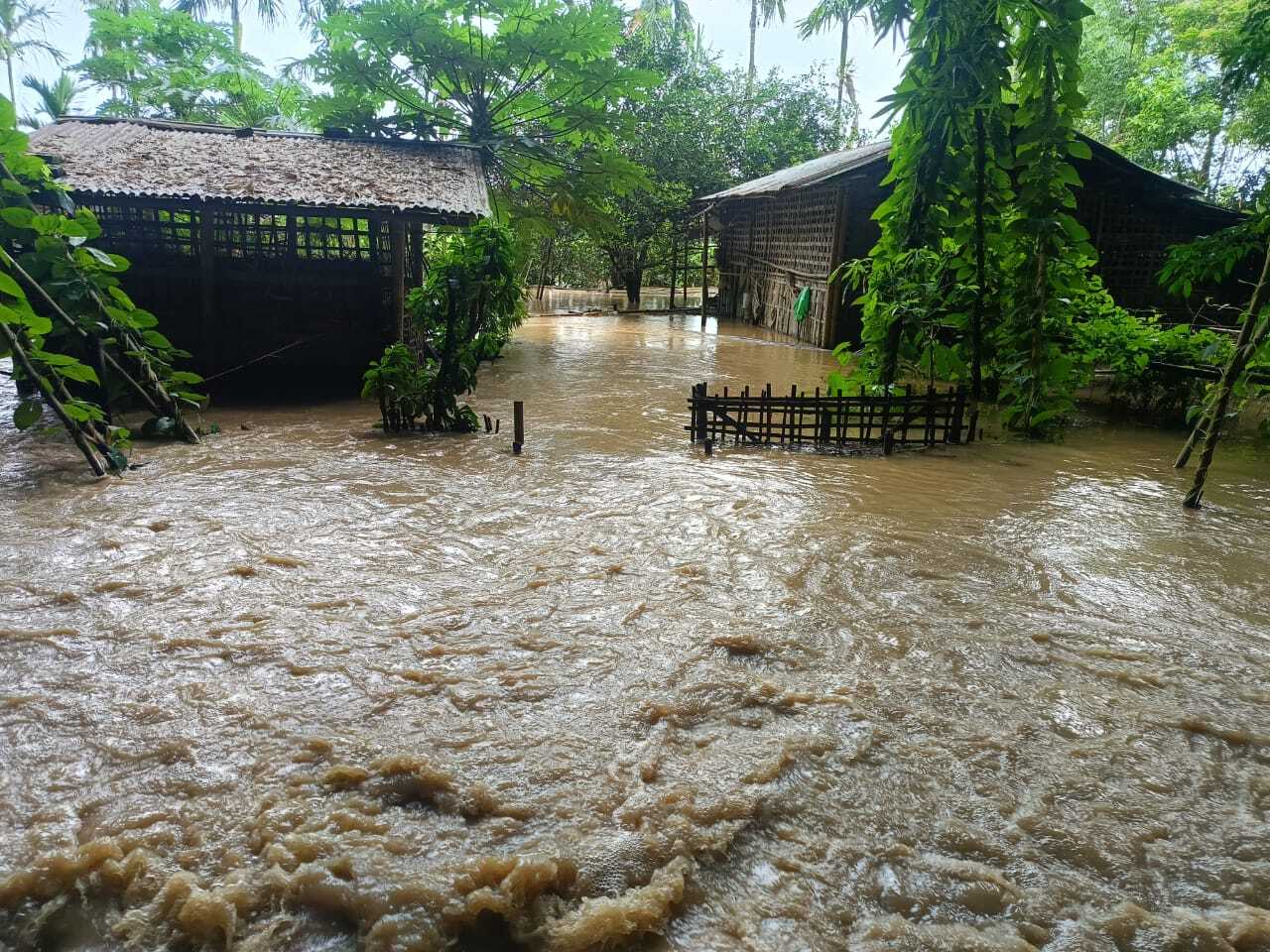

Community-led response to climate-induced disaster
SEEDS’ experiences in Uttarakhand and Kerala have shown that areas once considered safe—hillsides, riverbanks, and coastal zones—are increasingly vulnerable due to climate change. Environmental degradation and unpredictable weather patterns are triggering more frequent landslides, floods, and shifts in river courses, putting buildings and communities at risk.
In 2024, landslides triggered by cloudbursts destroyed two government schools in the Tingad Panchayat of Tehri district, Uttarakhand. These schools—Government Primary School, Tingad, and Upper Primary School, Kandargaon—were the only educational institutions serving children in this remote rural area. Their destruction left 90 children without a formal learning space.
In the immediate aftermath, classes were temporarily held in the village temple, the only public building that remained intact. While the temple provided shelter, it lacked the environment necessary for effective learning.
Recognising the urgent need for proper educational facilities, the Department of Education reached out to SEEDS for assistance in reconstructing the schools. These schools are intended to be transitional structures - to serve for a period of two years - with the expectation that the government would construct permanent school buildings within that time.
SEEDS was a natural choice for the task, having successfully constructed 17 schools in Uttarakhand following the devastating 2014 Kedarnath floods. However, a major constraint emerged: the original sites were now classified as hazardous and unsuitable for rebuilding.
The solution came from within the community. Residents donated a stepped farm plot—typical of the region’s terraced terrain—for the new school site. The land was a narrow, linear strip with large boulders, adding complexity to the construction process. Based on requirements outlined by the education department and inputs from community discussions, the new facility was to include six classrooms, as well as toilet and kitchen facilities, which was challenging given the limited space.
To address these challenges, the SEEDS team conducted a series of community meetings to mobilise support. Villagers played a crucial role by helping to remove boulders and clear the land, thereby enabling the construction team to begin work on a clean site. This collaboration allowed SEEDS to focus on the architectural and engineering aspects of the project.
The school’s design prioritised locally available materials, natural lighting and ventilation, and climate resilience, with an emphasis on comfort during extreme heat, cold, and rainfall. The site’s north-facing orientation allowed for cool, diffused light throughout the day. The building façade was designed to take full advantage of this natural light.
Given the narrow footprint of the site, all structures were arranged in a linear fashion. The buildings were constructed on a stone plinth, with brick walls up to 2.5 feet in height. Above this, large windows were installed to maximise daylight and airflow, and to allow students to have a visual connection with the natural environment around them. The roofs were constructed with insulated Galvalume sheets to minimise heat gain from intense sunlight. At the same time, their sloped design—typical in the region—protected them from heavy rain and occasional snowfall.
The construction phase, from March to May, was fraught with weather-related disruptions, including frequent heavy rains and hailstorms that made the site muddy and difficult to work on. Despite these challenges, the school was completed on time, thanks mainly to the support and participation of the local community. Construction was finally completed in the third week of May 2025.
This project reaffirmed the critical importance of community engagement in successful construction efforts. While SEEDS provided the technical expertise, local knowledge and hands-on support were indispensable in overcoming site-specific challenges.
The experience also highlights a broader lesson: the siting of critical social infrastructure, such as schools, must take into account the growing environmental risks in ecologically sensitive areas. Communities that are closely attuned to changes in their landscape must be involved in the planning and decision-making processes. Their insight is vital for ensuring that schools and other essential facilities are built not only to serve immediate needs but to endure the challenges of a rapidly changing climate.
During his visit to Tingad village, the Chief Development Officer of Tehri, Dr. Abhishek Tripathi appreciated our work. He suggested that the village president of Tingad adopt a similar technology for the 32 houses in the village that were completely damaged due to the landslide and had been declared unsafe.
The school that closed for summer break on May 27 is now scheduled to reopen for classes in the first week of July.
Director Built Environment






1. Chief Development Officer of Tehri Dr Abhishek Tripathi, during his visit to Tingad village.
The Government Primary School, Tingad, and Upper Primary School, Kandargaon
Breaking the Silence - Together
A Day of Menstrual Health Awareness in Nangla Nangli
“Menstruation is not a curse; it is a gift that allows us to connect with our bodies and the earth in a profound way.” — Period Power
At SEEDS, our work in building resilient communities often begins with the basics — clean water, safe shelters, access to healthcare. But in times of disaster, it’s often the unseen needs that go unmet. Menstrual hygiene is one such critical, yet overlooked, component of emergency response and everyday dignity. It is deeply connected to health, safety, and the ability of women and girls to participate fully in their communities — especially during crises. That’s why we continue to weave menstrual health awareness into our broader efforts of disaster preparedness and community resilience.
Every month, over half the world’s female population menstruates. Yet, in many places, this natural biological process remains cloaked in silence — treated as something shameful, whispered about, or altogether ignored. The stigma around periods often leaves women and girls to manage their menstrual hygiene without information, support, or safe products.
In March 2025, on the occasion of International Women’s Day, a group of dedicated volunteers came together with a shared mission: to talk openly about menstruation, distribute reusable hygiene kits, and begin to break the silence that surrounds periods — one conversation at a time.
The event took place in Nangla Nangli, a peri-urban village tucked into the outskirts of Noida. Over 200 women and adolescent girls arrived in small groups — some accompanied by children, others by husbands or neighbours — many travelling across the village to be present. These were women who live at the margins, juggling daily responsibilities, and yet, they made time for this moment of learning.
For many of our volunteers, this was their first time engaging with a community in such an intimate and meaningful way. There was nervous energy in the air — not out of fear, but care. Would the women feel comfortable talking about such a personal topic? Could the information be shared with sensitivity and clarity?
But as the conversations unfolded, hesitation gave way to warmth. Walls dissolved. Laughter emerged. Questions flowed. And so did stories — of pain, of myths, of resilience, of learning from each other. One young girl spoke about switching to reusable pads to save money. Another woman shared how she would teach her daughter to talk about periods freely at home.
The volunteers were not just distributing kits — they were exchanging trust, offering dignity, and receiving lessons in return. The community was not just attending an event — they were breaking taboos and shaping a new narrative around menstruation.
At its core, volunteering is an act of quiet revolution. It asks for no applause. It pays no salary. Yet, it creates change that ripples far beyond the moment. In Nangla Nangli, it gave rise to a few hundred conversations that may inspire thousands more.
Would you like to be part of this change?
Join us. Be a SEEDS volunteer. We invite you to participate in contributing to change.
Regional Manager, Partnerships




Volunteers and community women came together to break the silence around menstrual health.
How Your Donations Can Save A Family
Let me share a story that you are likely to relate to and may have wanted to DO something about - but did not know what to do. Across India, summer is approaching. Delhi recorded four heatwaves in 2022. Temperatures reached an unprecedented 42 degrees Celsius in 2023. In 2024, the Delhi National Capital Region (NCR) along with other parts of the country breached the 50 degrees Celsius mark.
A heatwave is characterised by maximum temperatures at a weather station reaching at least 40 degrees Celsius, with a deviation of 4.5 degrees or more from the norm.
With increased indoor heat, lack of water, and long hours without electricity, life in informal settlements of the National Capital Region – or for that matter any other city that has extreme heat - has become stressful for its residents. Daily wage labour and other low-income jobs—either work outdoors in extreme heat or indoors in overheated homes. This impacts their health, productivity, and income.
How contributions have helped
In 2023 from donations received via Give2Asia (now Myriad USA) raised over US$60,000, allowing SEEDS to intervene in a densely populated urban community of Kishan Kunj, East Delhi. We set up volunteer groups and trained members to identify 70 of the most vulnerable households for the installation of bubble wrap aluminum insulation sheets on their roofs. To enhance access to safe drinking water, the project team revitalised two water stations in Kishan Kunj and Shankarpur, with support from the Residents’ Welfare Association (RWA).
Through these individual contributions, we empowered families to use local and cost-effective solutions to alleviate the effects of intense heat by implementing street shading using green nets, plastic bottles, and recycled fabrics such as chunni (scarves), dupatta (stoles), or saree (traditional attire) to create effective shading solutions.


If you visit Kishan Kunj today, you’ll see how these simple interventions have created a ripple effect within the community. Residents are now investing in makeshift solutions to combat the heat wave. They are buying coolers, covering their roofs with thermal insulation sheets and jute bags, and proactively finding ways to protect themselves, inspired by what we implemented together.
Scorching days ahead
With another scorching summer ahead it’s the most vulnerable that are at risk. According to the second edition of the Multidimensional Poverty Index (MPI) released by Niti Aayog, approximately 14.96 percent of India's population is in a state of multidimensional poverty. About 60 percent of India's nearly 1.3 billion people live on less than $3.10 a day, according to the World Bank's median poverty line. Twenty-one percent, or more than 250 million people, survive on less than $2 a day.
The bottom population in India – survives in poverty. Families of four or five in a single household, generations struggling with a lack of resources to adapt and change in the face of progress. Society’s pressure on people to be providers, protectors, and the backbone of the world continues.
This kind of change doesn’t happen overnight—it happens because people come together to support one another. Whether through time, resources, or contributions, every effort counts toward building resilience in vulnerable communities. How can YOU be a part of this change?
“We make a living by what we get. We make a life by what we give.” – Winston Churchill
At SEEDS, we are committed to enabling the bottom one percent of vulnerable communities to withstand climate emergencies, secure their future potential, and thereby uplift the larger society. This means we are actively working in 100 identified districts with a network of partners and young ambassadors to design resilient solutions for the greater good.
Help us reach more such communities as the summer approaches.
We invite you to donate today. You can be a part of this movement.
Regional Manager, Partnerships
 Drinking water kiosks are critical for informal settlements.
Drinking water kiosks are critical for informal settlements.
 Women, children and the elderly are particularly vulnerable to heat strokes.
Women, children and the elderly are particularly vulnerable to heat strokes.
Unravelling the Subcontinental Climate and Geology
Growing up, I first encountered the term subcontinent in my geography class when we discussed India. Back then, I understood it in a very basic sense: India was a portion of Asia, resting on its own distinct tectonic plate. Little did I know that this idea of a subcontinent—rooted in geology—would become a focal point in my understanding of climate and geography.
Over time, I learned that the Indian subcontinent is not just a random subsection of Asia. Its identity dates to a geological journey: once part of the supercontinent Gondwana, the landmass drifted across oceans and collided with the Eurasian Plate, giving rise to the Great Himalayas. Climate and geology are intricately linked, yet it’s easy to overlook how profoundly they influence our surroundings. It never ceases to amaze me that even within a single country, climate conditions can span such extremes. Many nations exhibit this kind of variation, but climate change—like a silent undercurrent—reminds us of the importance of understanding these differences from more than one vantage point.
This winter, for instance, experts predicted a milder influence from La Niña, yet India has largely experienced an unusually warm season. Meanwhile, high in the mountains of Ladakh, the cold maintains its firm grip, with minimum temperatures plunging between -16°C and -20°C. For the hardy communities of Changthang, layering themselves in heavier winter clothing remains a daily practice in the fight against hypothermia, even as people in other regions fold away their winter wear.
Such stark regional contrasts underscore the subcontinental nature of India’s climate. Far from being a uniform space, the country is a tapestry of microclimates, each with its own rhythms and vulnerabilities. Anticipatory action plan for the chilly high-altitude regions like Changthang is rolling out amid icy winds, while preparations for the upcoming heat season are simultaneously gathering momentum. Each corner of the country faces its own climatic challenges, from arid deserts to humid coastlines, from dense forests to icy highlands.
Addressing these challenges demands both a macro and micro perspective. On a large scale, there is an urgent call to comprehend the compound effects of climate change—ever-sharpening extremes of heat and cold, shifts in rainfall patterns, and the resultant hazards they bring. Locally, we must focus on immediate solutions that shield vulnerable populations from the brunt of these changes. By understanding how climate hazards intermix with socioeconomic and cultural factors, we can craft strategies that are both adaptable and compassionate.
It is this ongoing interplay—between ancient tectonic collisions, modern-day weather extremes, and human resilience—that brings the concept of India’s subcontinental identity vividly to life. This identity is woven into the lands of Ladakh, the warm plains, the coastal stretches, and every unique region in between. By acknowledging each distinctive climate thread, we must stand better equipped to navigate the challenges looming on the horizon, uniting a diverse nation in the face of change.
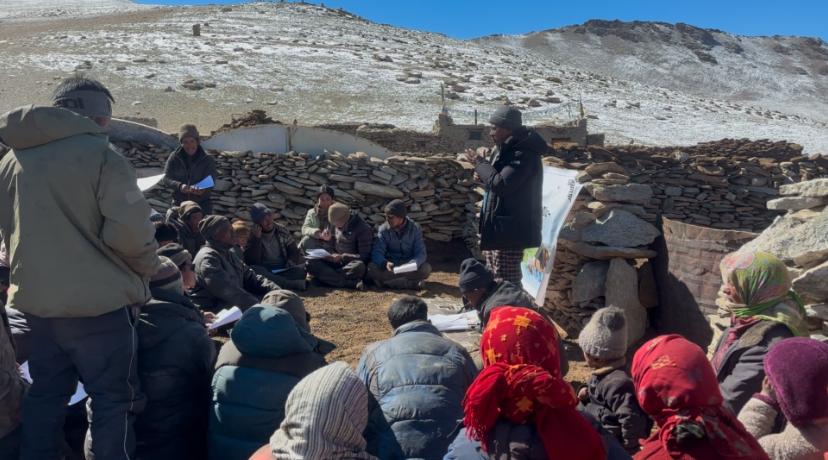

Research Associate
Rebuilding Hope: Restoration of Alor Dishari
The now vibrant premises of Alor Dishari Ghar once again echo with the laughter and energy of its children. After six months of uncertainty, the orphanage in Udaipur, in South Tripura is slowly reclaiming its warmth, offering its young residents a long-awaited sense of safety and belonging.
On August 21, 2024, Tripura was drowning—not just in floodwaters, but in loss, despair, and uncertainty. Relentless rains, the heaviest in over four decades, swallowed homes, fields, and livelihoods, leaving 17 lakh people struggling to survive. Families were ripped apart, with 31 lives lost, countless missing and 1.28 lakh souls forced into relief camps, clutching whatever little remains of their world. Thousands of homes were ruined, 70,000 hectares of crops were wiped out and shattered infrastructure pushed communities into darkness and isolation. The hardest-hit districts included South Tripura, Gomati, Khowai, and West Tripura.
One of the institutions severely impacted by the floods was Alor Dishari Ghar, an orphanage in Udaipur. The orphanage, which serves as a refuge for 50 children, was submerged when floodwaters rose rapidly. Fortunately, the children were evacuated before the waters reached dangerous levels. However, when the waters receded, the damage to the orphanage was extensive. Dormitories, kitchen buildings, and toilets sustained damage, ranging from cracks in walls to water stains. Essential materials, including computers, furniture, and books, were also destroyed.
The orphanage, nestled within Ram Krishna Adarsh Yoga Shala Ashram, has been a lifeline for 50 children—offering them safety, love, and education. The Ashram has nurtured these young souls with love and compassion, relying on government aid and private support to sustain them. The floods threatened the very foundation of the only home they knew.
The floodwaters did not just destroy walls. It shattered the fragile stability these children had built. Dormitories collapsed, computers were lost, records washed away, and the library ruined. The girls’ dormitory suffered the most, forcing them into makeshift shelters. As waters rose, panic set in, and the district administration evacuated them to a school, then to a government hostel. Though the children returned on September 17, 2024, after a month of clearing debris, the scars on their home and their hearts—remained. The Ashram's 1.75 bighas held the remains of two ruined dormitories, a computer lab turned into a girls' dorm, and a devasted kitchen and toilets in dire need of repair. The Ashram sought support from SEEDS to rebuild the girls' dormitories and construct a new boys' dorm.
With the generous support of Kotak Mahindra Bank, SEEDS has breathed new life into Alor Dishari Ghar, restoring not just its structure but also the hopes of its young residents. In the past few months, damaged walls have been repaired and repainted, a new dormitory has emerged from the ruins, and lost resources, including computer tables, have been replaced. This initiative is more than reconstruction—it is about rebuilding lives, and ensuring that the children and staff have a safe, nurturing space to learn, grow, and dream again. It has restored not just buildings, but the happiness and security of these children.
The restoration of Alor Dishari Children's Home has had a profound and lasting impact on the 50 children who call it home but on the wider community. More than just rebuilding walls and dormitories, it has restored dignity, security, and hope. Alor Dishari is more than a shelter—it is a sacred space, home to a temple that serves as a spiritual sanctuary for the community. Beyond providing refuge to children, it unites people offering comfort in times of need.


Director, Built Environment
Director, Impact & Inclusion
Developing a Safer Built Environment
Building Resilience Against Disasters
“Earthquakes do not kill people; unsafe buildings do.” This widely acknowledged statement underscores the critical role of structural integrity in mitigating disaster risks. In the face of natural calamities, the importance of resilient architecture becomes undeniable.
For years, SEEDS has championed a holistic approach to disaster resilience, placing building safety at the core of its mission. The organisation's work with disaster-affected communities highlights the pressing need for safer construction practices to protect lives and livelihoods.
Lessons from Major Disasters
The devastation caused by events such as the 1999 Odisha Super Cyclone, the 2001 Gujarat Earthquake, the 2004 Andaman Tsunami, and the Kumbakonam fire tragedy has underscored the necessity of integrating safety into building design. SEEDS has been instrumental in promoting ‘Build Back Better’ principles, training local communities and construction workers in safe construction techniques.
A key aspect of this approach involves constructing buildings equipped with hazard-specific safety features, serving as reference models for local communities. By engaging local craftsmen and equipping them with disaster-resistant construction skills, SEEDS ensures that critical knowledge remains within the community. Notably, school buildings have been a focal point for demonstrating safe construction, as they often double as refuge centres during emergencies.
Merging Traditional Wisdom with Modern Safety Standards
SEEDS’ construction projects emphasise building with communities rather than for them. By incorporating indigenous knowledge, traditional construction techniques, and locally available materials, projects are designed to seamlessly blend with the existing built environment. This approach not only ensures cultural relevance but also facilitates easier maintenance by local communities.
Firsthand Experience with Safe Construction
My introduction to safe construction practices came through a seismic retrofitting project for school buildings in Shimla (Himachal Pradesh), Patan (Gujarat), and Guwahati (Assam)—all high-risk seismic zones. Many government schools had suffered from unplanned modifications and lacked essential earthquake-resistant features. Retrofitting these structures proved to be a cost-effective alternative to rebuilding, minimising disruptions while significantly enhancing their resilience.



Adapting to Emerging Climate Challenges
The built environment must continuously evolve to address emerging environmental threats. Recognising this, SEEDS pioneered a climate-resilient shelter in Gorakhpur, Uttar Pradesh, to combat urban heat and flooding. This low-cost home, constructed for a homeless street vendor and his daughter, minimised the use of concrete and steel while ensuring protection from extreme weather conditions. The innovative use of Rat-Trap Bond brickwork reduced material usage while enhancing insulation, keeping the home cool and comfortable.
This project not only provided a dignified living space for a vulnerable family but also demonstrated that resilient housing solutions can be made accessible to low-income communities. Additionally, it helped train local masons in sustainable construction techniques. The initiative gained international recognition, being acknowledged as a UNFCCC Lighthouse Activity for its innovation and impact.
Sustainable Reconstruction Efforts
SEEDS has led post-disaster reconstruction efforts across Kashmir, Uttarakhand, and Kerala, focusing on resilient shelter and school construction. By leveraging locally available materials—wood, bricks, and laterite stone—and engaging skilled local craftsmen, these structures have withstood subsequent disasters. In many cases, communities have expanded transitional shelters into permanent homes, a testament to the sustainability of these designs.

The Evolving Role of Architects and Builders
The task of designing resilient structures has grown increasingly complex due to climate change. While disaster safety remains paramount, architects and engineers must now integrate adaptive features to withstand extreme temperatures, intensified storms, and rising sea levels. Additionally, urban expansion into vulnerable areas necessitates a fresh perspective on site selection and construction techniques.
Sustainability is another pressing concern. Reducing the carbon footprint of construction activities and minimising environmental impact have become integral to modern planning processes. While these considerations were always part of SEEDS’ design philosophy, they have taken on greater urgency in recent years.
Looking Ahead: Innovation and Continuous Adaptation
The focus of contemporary design extends beyond disaster response; it embraces adaptation and long-term sustainability. The challenge for designers is not just to rebuild, but to innovate—creating structures that are resilient, adaptable, and environmentally conscious. Even transitional shelters must be designed with extreme climate conditions in mind to remain functional.
As ground realities shift, so must our approach to building. The future demands continuous re-evaluation and reinvention, ensuring that our built environment remains a source of safety and resilience for generations to come. With cities facing urban heat island effects, the future of building also must factor in options to protect large populations that live and work in structures that are exposed to extreme heat.

Director, Built Environment
The True Essence of Volunteering: Beyond the Numbers
‘Volunteering can improve business outcomes’. If building a business brand was the sole purpose of volunteering, then the true sense and purpose of this noble act would be lost. Does it make a difference, though? Yes, it does. The impact goes far beyond numbers or branding – it touches and transforms lives, builds connections, and creates lasting change.
Volunteering in corporate India represents an INR 7,500 crore socio-economic opportunity. Employees and companies have the potential to delve deeply into development issues, making a meaningful societal impact beyond conventional CSR funding. Yet, the essence of volunteering lies not in counting hours or checking boxes but in fostering genuine understanding and creating sustainable impact at the grassroots level.
At SEEDS, our approach to volunteering reflects this belief. Our efforts are not limited to simple acts; instead, we emphasise helping volunteers truly understand why their actions matter. Our communities thrive because we drive impact where it is needed most. Let me share an example that illustrates this.
Recently, employees from one of SEEDS’ donor companies joined us in an initiative to plant saplings at a government school. The school, located in a green yet underserved area, lacked the funds to construct a boundary wall and had instead relied on wire meshing to create a perimeter. We encouraged the volunteers to plant saplings along this boundary, choosing species that would grow tall and strong. Over time, these saplings will serve as a protective cover, offering privacy, reducing noise, and creating a more secure environment for the children.
After the two-hour activity, we encouraged the volunteers to interact with primary-grade students over lunch. This simple act of sharing stories and a meal fostered a sense of belonging among the students. It reassured them that they are seen, valued, and not looked down upon. For the volunteers, it was an opportunity to connect deeply with the community they were serving, making the experience not just impactful but also personal and transformative.
At SEEDS, we believe that volunteering should evoke a sense of belongingness, a feeling of family. So, what is the true meaning of volunteering?
'Volunteerism is the voice of the people put into action'. – Helen Dyer
To me, volunteering means understanding that you can help and contribute to improvement. It is about courage and resilience, about pushing boundaries to make meaningful contributions to society. As Helen Dyer, the renowned biochemist and cancer researcher, eloquently put it, volunteering is about collective action. It is not just about making a difference in someone else’s life but also about evolving as individuals.
For those who wish to volunteer but don’t know where to begin, the first step is to find your passion. This will help you narrow down opportunities that align with your values and goals. However, I have another suggestion: step out of your comfort zone. Choose a field that is not in your immediate circle of interest. By doing so, you open yourself to learning something new, contributing in unique ways, and embracing experiences that might become invaluable assets in your life.
To me, volunteering is exciting because it is an opportunity to try something novel and invigorating. It is a chance to break the monotony of routine and engage in something meaningful and fulfilling. Why not take a leap of faith and explore this exciting world of volunteering?
We at SEEDS welcome you to join us in our mission. Bring your employee resource groups, colleagues, or even family members. There are countless ways to contribute – you could help create campaigns, spread awareness about our work, or roll up your sleeves and immerse yourself in the community. Whether you’re brainstorming in a boardroom or planting saplings in a field, your efforts can create a ripple effect of positive change.
The power to make a difference lies in your hands. Volunteering is not just about giving; it’s about growing, connecting, and being part of something larger than yourself. Together, let’s create a world where every action, no matter how small, contributes to a brighter, more inclusive future.
We look forward to welcoming you to the SEEDS family. Let’s build a better tomorrow, one act of kindness at a time.
Regional Manager - Partnerships, SEEDS
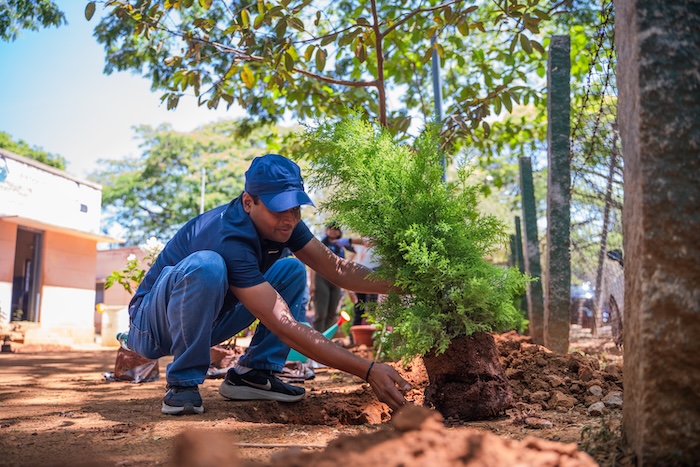

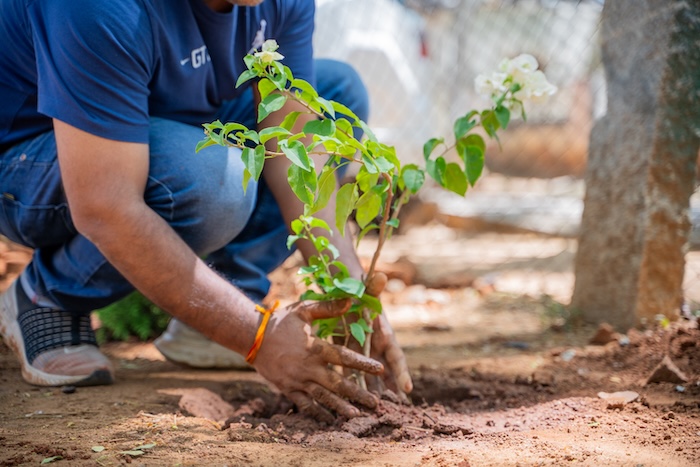
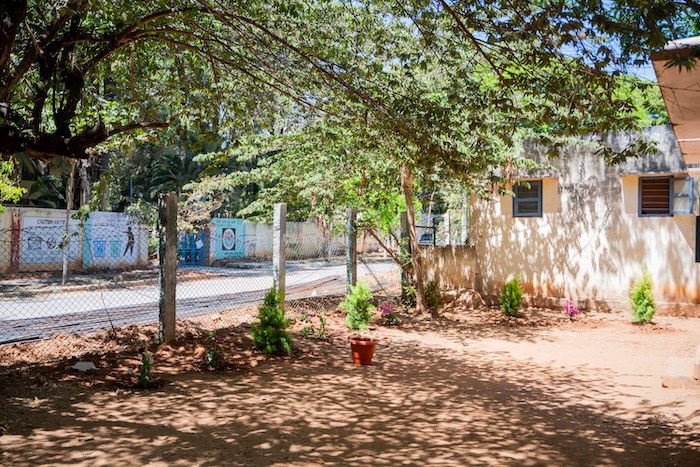
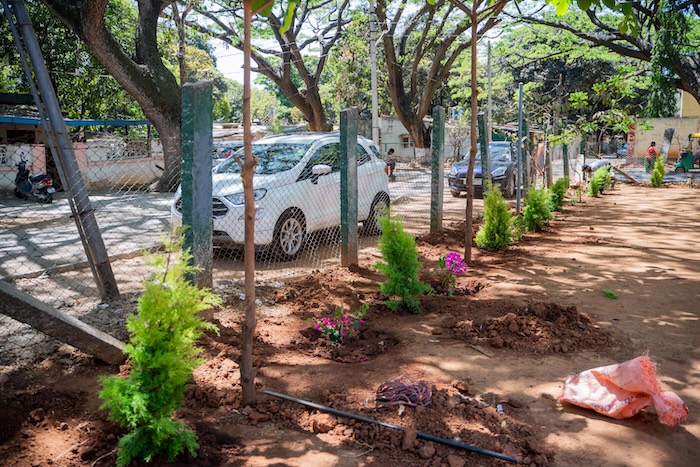
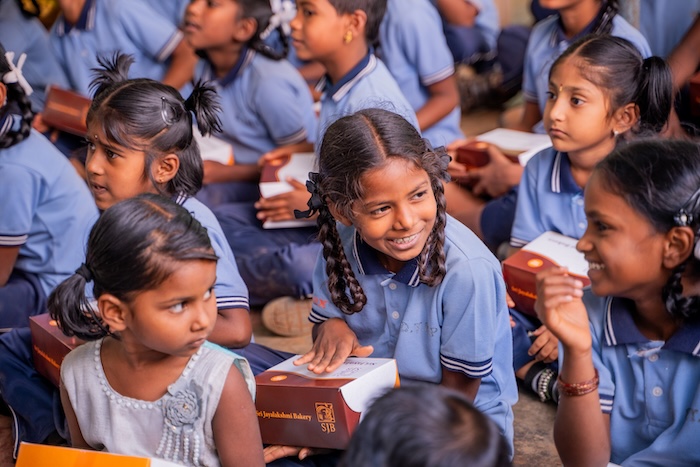
Rediscovering Resilience in the Heart of Sundarbans
Nestled in the rich landscape of islands and waterways, the Sundarbans National Park stands as a UNESCO World Heritage Site and a sentinel of biodiversity. Yet, this region, among the top 50 of India’s 225 most climate vulnerable districts, carries the weight of its environmental and socio-economic challenges. My recent journey to this enigmatic land—through the bustling streets of Kolkata to the serene yet vulnerable islands of South 24 Parganas, West Bengal—was not just a professional visit but a deeply transformative experience.
The Sundarbans is a landscape of contrasts—magnificent mangroves juxtaposed against the stark realities of climate-induced adversities. SEEDS began its intervention here in 2020, following the devastation by Cyclone Amphan. What started as an immediate disaster relief effort has since evolved into a comprehensive mission to restore mangroves, rebuild lives, and revive livelihoods. Today, our work spans three projects, supported by three donors across multiple locations, each showcasing the power of community participation and the tangible impact of sustainable interventions.
Recently, I had the opportunity to visit one of the project sites in the Kultali block of South 24 Parganas district in the Sundarbans. I was accompanied by the SEEDS Programme Manager Faiz Ahmed Khan and Programme Manager for Technical Solutions Rangeet Mitra.
During the visit, our team was warmly welcomed by the communities with handmade bouquets and a beautiful flower-sprinkling tradition. Through the interaction, what touched me most was the resilience and gratitude that came through in their words and actions. Despite being geographically isolated and often reachable only by boats, these communities radiate incredible strength and determination. From women-led self-help groups (SHGs) to young schoolgirls dreaming of brighter futures, I encountered individuals who embodied grace and perseverance in the face of challenges. One such young girl, preparing for her 10th board exams, left a lasting impression on me. She spoke with confidence about her dream to peruse higher studies in history and excitedly asked for a selfie with us. I felt perhaps that she saw SEEDS as role model, reflecting the impact the ongoing work has had on her life. Her optimism and aspirations painted a vivid picture of hope, reminding me of the boundless potential within these brave communities.
The essence of our work in the Sundarbans lies in the mangroves. These natural barriers not only protect against cyclonic storms but also sustain the delicate balance of this ecosystem. Community members, who were losing traditional practices about the importance of the intricate role of mangroves, now demonstrate a remarkable commitment to revive and restore them. During our interactions, women and schoolchildren actively recounted lessons from our training sessions—planting techniques, cyclone preparedness, and the broader ecological benefits of mangroves. It was heartening to see how knowledge had taken root and was flourishing within the community.
The visible health of the mangroves was another testament to the success of our interventions. Tidal influences marked clear water levels on the trees, with darker green foliage indicating submerged areas and lighter green signifying exposed regions. These observations underscored the thriving ecosystem that the community has helped nurture.
For me, this visit was a profound reminder of why I chose to work in the humanitarian sector. The direct impact of our work is evident not just in restored mangroves but in the sparkling eyes of those we support. The women and young girls I met are ambassadors of resilience, trained and empowered to take on challenges. They understand that this land is their own, and their commitment to protecting it is unwavering. As I left the Sundarbans, I carried with me not just memories but lessons—about the power of community, the resilience of nature, and the importance of hope. The Sundarbans is a challenging geography, hit by storms and cyclones annually, yet its people rise stronger each time.
In a world grappling with climate change and environmental degradation, the Sundarbans serves as a poignant reminder of what can be achieved when communities and organizations come together. It’s a story of resilience, restoration, and renewal.
Let us ask ourselves: How can we, in our capacities, contribute to such transformative journeys? For in the end, the strength of a community lies in its collective effort to protect and nurture the environment it calls home.
Technical Proposal Manager, SEEDS
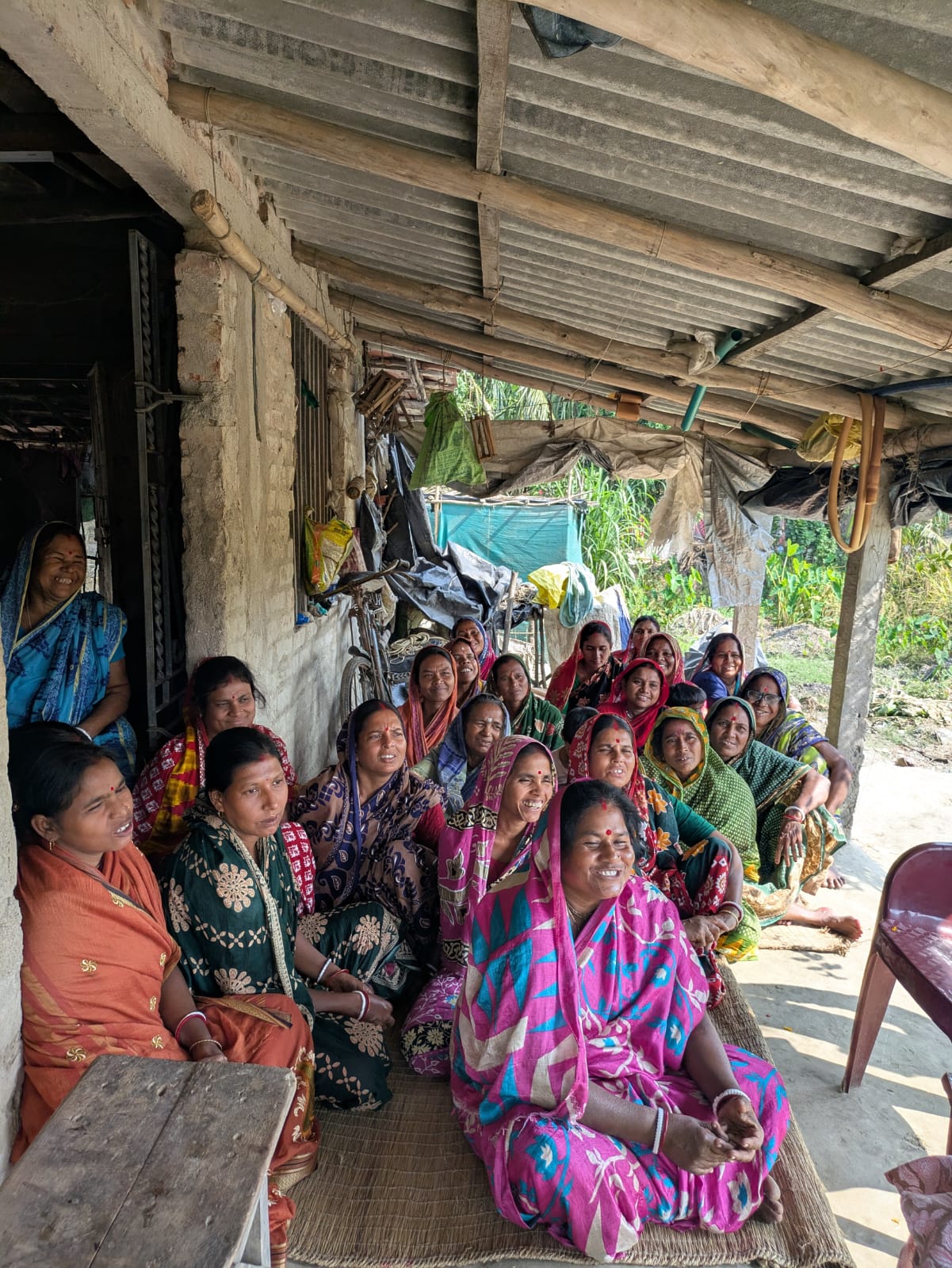
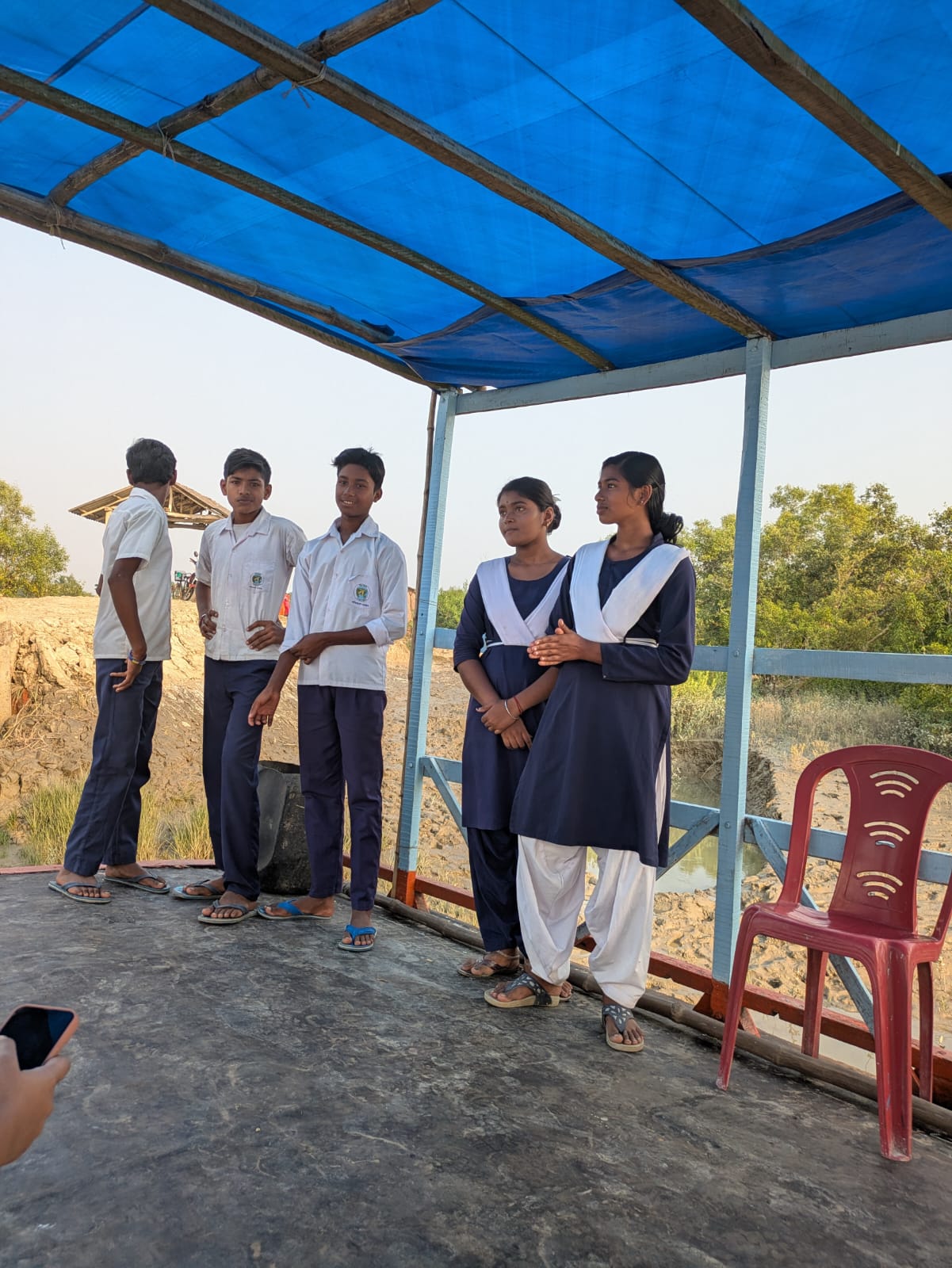
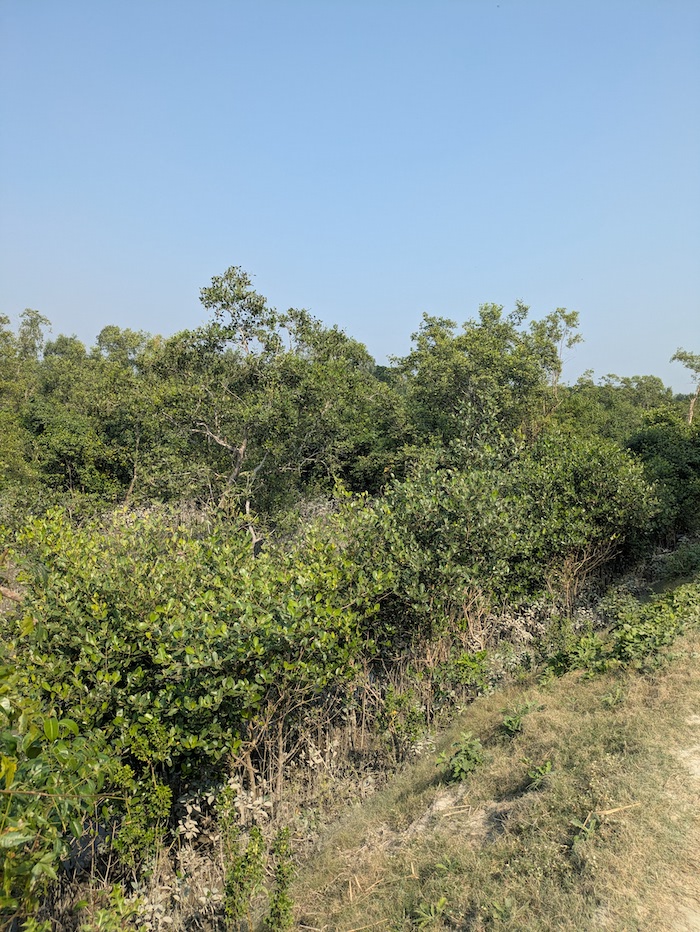
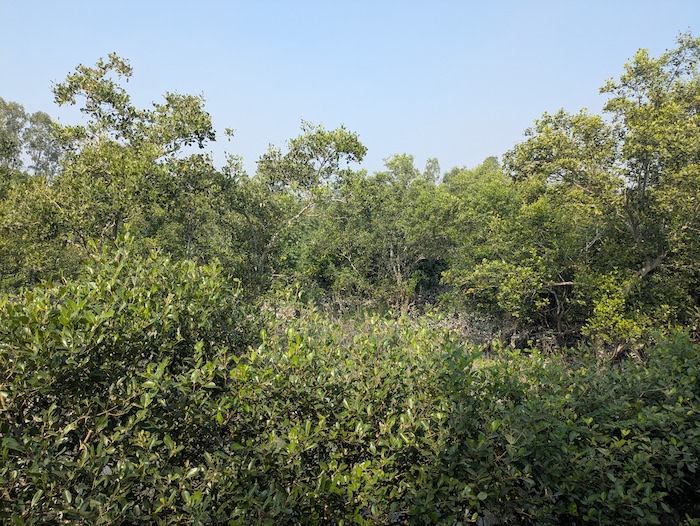
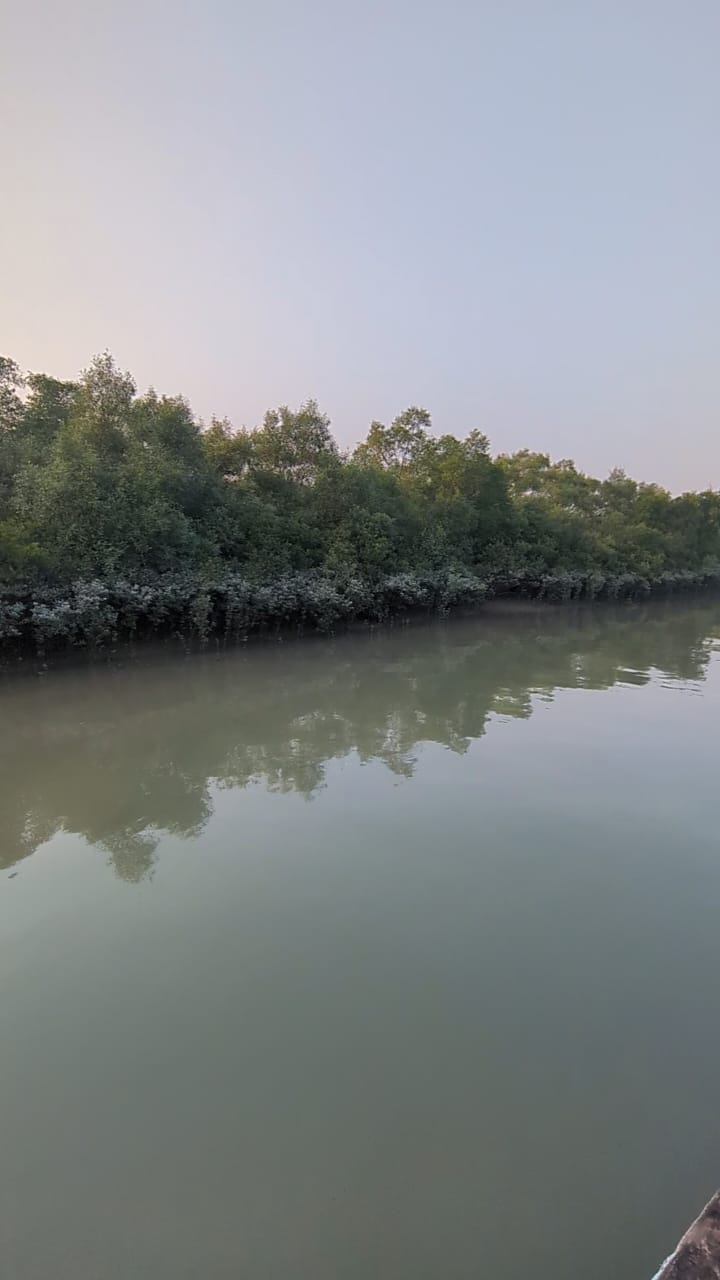
Being resilient all the time in the place they call home
Following the impact of Cyclone Dana in October 2024, SEEDS emergency response was initiated in select districts of both the affected States - West Bengal and Odisha. In the five years that I have been at SEEDS, I have often heard of colleagues hitting the ground running - following a disaster. At the end of 2024, an opportunity presented itself for me to accompany one such team to West Bengal.
In kilometres, the Sagar Island, on the continental shelf of the Bay of Bengal is a mere 100 kms away from the capital of West Bengal - Kolkata. In Delhi you can cover 100 kms in say a maximum of two hours. As I left Delhi for Kolkata, colleagues prepared me for the seven-hour journey Sundarbans that can be completed only with a change of multiple modes of transport! Trying to get to places such as Sagar Island which was my first destination, we first had to reach Naamkhana. This is followed by a change to a To-To (e-rickshaws) and finally you board a Launch boat – popularly called a Launcher.

While traveling from Kolkata in a car, the journey stretched over three hours due to traffic and pothole-ridden roads. I began wondering about my final destination as I had only seen ‘Sundarbans’ on the map and heard colleagues talk about it. For the night we stopped at Naamkhana, Sundarbans, some 60 kms from Kolkata. That night I saw the efforts of the field team. Planning for the relief distribution scheduled the next morning, they were matching the list of affected people and making tokens to smoothen the process. They literally worked against time to get things done. Planning and packing complete at 2 am, the team were up and ready to leave the next morning at 7 am! From Naamkhana we took a 20-minute Toto ride to the jetty to board the Launcher – this is a basic boat that ferries people to and fro. For us, of course all of this had to be done while transporting 104 kits - a mix of shelter and hygiene relief material!
As I sat on the top deck of the Launcher - I gradually begun to understand the tenacity of communities living here. I knew very little about the Sagar Islands, in the Sundarbans. I got to know that people worship the water on which their livelihoods are dependent on. As I spoke to people, I also understood that this very source that fuels the basics of life also forced them out of their land. Strangely, I felt that their normal life was one of resilience. As the Launcher picked up the gentle lulling pace of the journey with its muddy coloured tides breaking at the mangrove cover on the shores my anxiety levels peaked. As the only one wearing a life jacket, I remained firmly on my seat – in the middle of the boat. As we left the tides behind, the water became clear. Finally, the Launcher was in the middle of the delta, giving a 360-degree view of the vast expense of water and with people on the boat now hushed into a silence. This brought me calm and I marvelled at the manner in which people on the boat were adept in walking around the boat.
It also made me wonder about this Delta, where the salinity of the river tells you when it becomes the part of the sea, how the tidal waves break away freely and makes one wonder if there is any place to walk! Soon we could see land and the launcher captain shouted ‘Sagar’ – much to my relief. The planned two-hour journey had by now became three due to incoming high tides.
Relieved to be on ground we got down and headed straight towards the Panchayat Hall where banners, tables and chairs were already set. Even as it seemed that a crowd had gathered in the open hall anxiously waiting for us, not a single person present was without their token and identify proof. Soon I could hear and see the SEEDS team members in action. On the top of their voices, they were calling out the names of the people, one after another. Then Amalan who was tasked to hand out the kits to people whose documents have been verified swung into action. In a while, people were picking kits, some on their shoulder and some loading them on the Totos. The smiles on their faces were indicative of the value of the goods to get their lives back on track. That was the end of the first day.
The next day standing at the top of the bund in Mousuni - another island in the Sundarbans, I could feel the breeze and stare at the sea. Waves kept coming to the shore, sweeping the sand, only to be pulled back in. Ghayasuddin, a local volunteer then pointed out to the open area behind with fields, homes, and people around, explaining to us how deep the waves came inwards during Cyclone Dana. Around four feet of the area was submerged, including the bund I was standing on!
For communities here, their daily life includes being aware of the waters and what it might bring up. Any clue to an upcoming incident triggers evacuation of their homes, leaving behind the island. From the materials that they received the previous day signs of use were already there. The tarpaulin that came in the kit was used to fix a home or used as a much-needed extension. While some used it as a cover for their grains, some as a place to dry the fish – an important source of income as well as integral to local cuisine. Patia, Lahra, and Tapra dry fish are widely available in Sagar Island. These traditional sun-dried fish varieties are rich in flavour and highly sought after for their distinct taste.
At their homes we heard their stories from the recent Cyclone Dana. Showing us damaged homes, Pratima Haldar a Santhali tribal woman who lives in Mousini and volunteered during the emergency took us near the embankment, the last house there was her home. Around 200 metres from the embankment where she stays by herself, the roof of her home was damaged during Dana. She smiles as she points to the now fixed roof of her home. Having collected and observed the process of relief distribution, I was now ready to head back home. Sunny Gehlot, Rajesh Kumar, Jayonta Da, Rehana and Amalan were my dependable co travellers this time.
I travelled back to Kolkata, eager to get back on the flight home, to Delhi, the city that is home to me. Now these islands and their resilient people stay with me. Each time I hear about Sundarbans or see the map, I will always feel the deep connect that I made with the people I met as well as the places I visited.
Digital and IT Manager SEEDS




Passion attracts talent
It’s with great pride that I look back at my journey at SEEDS. Interestingly, my first interactions with the co-founders Manu Gupta and Anshu Sharma, was once or twice a year as part of the auditing firm I worked with. I witnessed how two young environmentally conscious and passionate people mapped a path to what they wanted to do. Today they have built a SEEDS team - which is equally committed.
When SEEDS responded to the Bhuj earthquake in 2001, the co-founders requested me to visit the field too. They wanted to ensure better team coordination and understanding of the innovative work that was being planned and implemented there. As the community in Patanka gradually warmed up to picking up the rehabilitation work themselves – after a lot of convincing and cajoling due to local dynamics and the lack of trust following the devastation- I experienced SEEDS’ in action - especially the innovations they were initiating on the ground. I also saw how our initiative on the ground was later the cornerstone for the State School Safety Programme, that included training of trainers for teachers.
Building trust with communities, listening to what they thought would work in their communities, sharing options for rehabilitation, building their capacities to be part of the rehabilitation process – these have been the founding stones for SEEDS. The work was always so unique and innovative that gradually appreciation from important stakeholders especially the Government began to come by. For me, my world opened up to working directly with a whole variety of people.
By 2005 I was working full time at SEEDS. Another field exposure was during the rehabilitation work following the 2004 Tsunami. Once out in the field – where often there was nothing - I learnt about the reality of ground situations. Working with the team on the field, I realised the futility of some of my demands from Delhi. I realised that with the desire to serve, the teams were sometimes stretching themselves beyond the call of duty, their limited budgets and tight timelines yet honouring commitments. With such challenging situations now so clear to me, I made the effort to understand and balance both sides of emergency response and budgeting by reworking the best we could.
SEEDS believes in working behind the scenes – centre staging instead all the community efforts. From Bhuj, to the Andamans, to Leh, Barmer, Poonch and our work in Pulwama over the years, everywhere that SEEDS has intervened, we have tried our best to ensure that we leave the communities with much more than we initially envisaged. Which is probably why if there is an untoward incident – very rarely though- its community that takes it upon themselves to control the situation as we experienced in conflict zones like Poonch and Pulwama.
During an emergency, rehabilitation in the higher reaches of the Himalayas is often carried out under crushing deadlines. Our work in Pulwama following the flash floods comes to mind simply because of the extremely tight schedule. Two hundred transition shelters had to be built in two months - before the first snowfall in the region. The senior team from Delhi divided time and remained on ground with the community until the task was completed. We all remember this as a do or die situation both for the community as well as the SEEDS team. When the timber supply chains broke down during this critical work, support came in from the National Disaster Management Authority and the Army ensuring that the communities SEEDS was supporting received the timber to complete their shelters on time. Every time our work has been technically sound it has gained recognition from Governments and sometimes the media too.
Overlooking our own comfort – especially the search for vegetarian food – is always deeply overcompensated by communities. I recall the SEEDS emergency teams being out the whole day. Very often community would volunteer to first find a place for them to assemble and keep their things and then a makeshift workspace. Often this meant, that an affected community that already had compromised their comfort by sacrificing a much needed room for us during the day. They would also double up as mobilisers to help us solve challenges small and big.
It’s also with deep gratitude to donor organisations that the team has skilled itself to manage funds. Our nimble management of funds during a phase of immense organisational growth helped our teams deliver at all levels. Strengthening systems on ground have gradually helped us respond to two emergencies at a time – thereby increasing SEEDS reach during these crucial times. Adhering to policies and being compliant have sustained the team and prepared us for the future.
Today SEEDS teams continue to come together to do the heavy lift during India’s now increasing emergency season. Teams then peel back to their wide variety of projects specialising now on disaster risk reduction, nature-based solution options, sustainable environments and aligning technology during emergencies. Initiative, innovation and commitment to people and environment are the stuff that SEEDERS are made up of!
As I reflect on past learnings and look ahead to SEEDS' future, my hope is that the seeds we have sown together—with communities, partners, and donors alike—along the path we’ve walked, will help grow into a resilient and sustainable future. A future that will stand strong in the face of increasing challenges from disasters and climate change.
Director Finance Planning & Controller SEEDS


Resilience in the Himalayas: Protecting Livelihoods Amidst Harsh Winters
The soft, resonant chants from the gompas of Leh drift through the crisp mountain air, filling the vast landscape with a sense of spiritual presence. The monks’ prayers rise in perfect harmony, like an ancient hymn binding earth to sky. As the sacred mantras echo through the valleys, they invite all who hear them to pause, reflect, and find peace. In the stillness of the mountains, these chants become a living prayer—a bridge between the physical and the divine, guiding the soul toward serenity and understanding.
Nestled in this harsh yet beautiful land, the Changpa tribe of the Changthang Plateau depend on their Changra goats for the prized Pashmina wool that sustains their livelihoods. Yet, the region’s extreme winters, coupled with the effects of climate change, shifting rainfall and snowfall patterns, land-use changes, overgrazing, wildlife stress, and geopolitical tensions, have led to increasing pasture insecurity. During the winter months, livestock face severe scarcity of grazing land, causing mortality rates to rise. This threatens not only the survival of their herds but also the economic fabric of the Changpa tribe and the broader Pashmina wool industry.
A recent trip to Leh aimed to refine possible interventions of a project designed to reduce livestock mortality and improve the health of the Changpa tribe. Initially focused on addressing the immediate risks posed by harsh winter conditions, the discussions shifted to mitigating livestock losses, with a secondary goal of enhancing community health.
Secondary research and discussions with local partners underscored the urgency of prioritising the first objective—protecting the animals during the most vulnerable months.
Anticipatory action will be urgently required once two key environmental signals present themselves: the onset of Chillai Kalan (December 21), marking the arrival of severe winter, and snowfall exceeding two inches, which further stresses livestock. At these triggers manifest themselves, interventions such as feed, fodder, nutritional supplements, and insulation materials to protect the animals from the biting cold will be urgently required.
Preparations need to be made well in advance, to enable swift and effective responses once the triggers are activated. Stakeholders have emphasised livestock are particularly vulnerable during the lean season. They placed greater emphasis on providing additional feed, fodder, insulation, and insurance during these critical months, ensuring a more comprehensive and sustained support system for both livestock and the community.
The trip to Leh has been instrumental in building collaborations with local stakeholders and understanding the on-the-ground realities. Through ongoing evaluation and collaboration, we aim to leverage efforts to protect the health of the Changpa people and safeguard the future of their livestock. The challenges posed by Leh’s winters are formidable, but with a thoughtful and adaptable strategy, we can make a meaningful difference in the lives of this resilient community.

Healthy soil means a healthier planet
A step towards sustainability
Soil erosion is a major concern globally, and it can be caused by natural agents such as water, wind, and glaciers. However, anthropogenic activities like excessive tilling, mining, deforestation, overgrazing, and the use of chemical fertilisers also contribute significantly to soil erosion. Soil is the thin veneer that covers the Earth’s surface. It is formed over millions of years through a process of weathering, transportation and deposition from pre-existing rocks soil forms.
Since 2020 SEEDS has been working in the Sundarbans in West Bengal combating the growing problem of coastal soil erosion due to seasonal cyclones. By building the capacity of communities, in three villages of South 24 Parganas, Patharpratima, Kultali and Gosaba, efforts are on to build buffers to storms which are helping conserve soil as well. This work is critical considering that the Food and Agriculture-led Global Soil Partnership, estimates that approximately 75 billion tonnes of soil is lost every year, which affects ecosystems, agriculture, and the environment. This loss can lead to decreased crop yields, loss of biodiversity, and harm to the economy. It is, therefore, crucial to address soil erosion and find ways to conserve the soil.
Topsoil, which is the richest and most fertile part of the soil is home to a variety of microorganisms, organic matter, and plants, making it vital for plant growth. Plants rely on the minerals and nutrients in the topsoil for their survival, while soil depends on plants to stay intact, as roots bind the soil together. The relationship between plants and soil is essential. If plants die, the soil becomes loose and prone to erosion. If the soil erodes, plants cannot survive, creating a cycle that can impact food production for all living beings.
In Sundarbans, after areas most at risk of erosion were identified, regular soil and water testing was carried out to understand their chemical and biochemical properties. This helped in taking informed decisions about how to protect the soil. A nature-based solution to combat coastal soil erosion was the plantation of mangroves and vetiver grasses that bind the soil together and prevent its erosion. By training community, learning from their existing traditional wisdom and monitoring the ongoing work the survival of these important mangroves has been ensured. With the saplings growing in strength, they hold on to soil even through strong storms.
Planting mangroves and vetiver grass, minimises soil erosion and the land becomes more stable. These plants not only help in soil conservation but also provide numerous benefits to the local community, including a regular source of income. Mangrove forests provide homes for various species, increasing biodiversity and creating tourism opportunities.
The strong roots of mangrove trees also create a natural barrier against the waves, preventing soil erosion caused by water. These trees form a protective cage that helps hold the soil in place. Known for its sturdy roots, vetiver grass helps bind the soil together and prevents erosion. The grass spreads quickly and covers large areas in a short time. It also absorbs harmful chemicals and heavy metals from the water, making the environment cleaner. Moreover, vetiver is valuable to the local community as it can be used for making ropes, baskets, and other handicrafts, as well as producing juices and essential oils.
Apart from plantation, measures have also been taken by the community to cage and bind the soil with the help of eco-friendly techniques. One of these techniques is binding the soil with nets designed with the help of jute.
Soil conservation is not just about protecting the land, it is more about sustaining life. By taking steps to prevent soil erosion, we can protect ecosystems, ensure food security, and create a better future for generations to come. The efforts in the Sundarbans, with the planting of mangroves and vetiver grass, serve as an excellent example of how we can use nature to protect nature. We should understand the importance of soil conservation and take action to safeguard this vital resource. After all, a healthy soil means a healthier planet!
Content Writer - Programmes

Ahead of mangrove plantation, women prepare the ground in the Sundarbans.

Women in the Sundarbans have been trained to plant and take care of mangrove saplings.
Resilience in Tripura Sundari: A Story of Faith and Fight
Amid the verdant hills and winding rivers of Tripura, nestled atop a tortoise-shaped hill, stands the revered Tripura Sundari Temple. Known locally as ‘Matabari’, this sacred shrine in Udaipur is a major Shakti Peetha, a site where, according to legend, a part of the goddess Sati’s foot fell. Pilgrims from far and wide come to witness the divine power and beauty of Tripura Sundari, who embodies compassion, strength, and resilience - the same resilience her people have shown in the face of nature's fury and adversity.
In recent months, unyielding rains poured in Tripura, submerging villages, triggering landslides, and isolating communities. Roads were flooded, homes submerged, and the Gomati River swelled as if in protest. The incessant rains and the swollen river were no match for people and livestock. Amidst the chaos though, people clung to their faith, gathering at the temple to seek solace and strength from the goddess. In their prayers, they carried a collective hope, drawing from the enduring spirit of Tripura Sundari as they faced the daunting task of rebuilding their lives.
The recent floods in Tripura have underscored the devastating effects of climate change, intensified by factors such as deforestation, altered land use, and inadequate flood infrastructure. Experts describe the floods as a “classic example” of climate-driven calamities, with over 32 fatalities and approximately 1.7 million people affected. Villages that once thrived were reduced to remnants as homes and livelihoods were swept away, leaving countless families grappling with loss, displacement, and uncertainty.
Despite these overwhelming hardships, the communities of Tripura continue to find strength in the goddess they revere. Much like the indomitable power of Tripura Sundari, they have found ways to persevere. Supported by the START Network, aid and support reached remote and hard-hit areas, allowing communities to begin the process of rebuilding.
The response efforts were built on compassion, empathy, and the desire to provide meaningful support. For those who lost their homes and were displaced, shelter kits, hygiene essentials, and clean drinking water were provided. Recognising the toll on both physical and mental well-being, counseling services were extended to vulnerable groups, particularly women, addressing not only immediate physical needs but also mental health.
One critical intervention was the restoration of handpumps, which serve as vital water sources for these communities. Women were trained to carefully clean and chlorinate the wells thus restoring access to safe drinking water, turning once-contaminated sources into symbols of hope and renewal. This practical solution not only met the community’s immediate need for clean water but also conveyed a powerful message: they were not alone; someone cared, and help was here.
In Jolaibari, where 127 families sought refuge in a makeshift shelter amidst overcrowded and unsanitary conditions regular health and hygiene sessions helped women learn vital practices like handwashing, menstrual hygiene, and water sanitation. These women, initially unfamiliar with these hygiene practices, embraced them, sharing their newfound knowledge with others in a powerful display of community resilience.
In times of adversity, the people of Tripura have shown that resilience is more than survival; it is a collective pursuit of dignity, unity, and hope. Much like the temple of Tripura Sundari itself, the people have become symbols of beauty, strength, and power. Complaint Response Mechanism (CRM) Committees have been formed with local leaders to ensure that all receive the support they need, exemplifying community-led solutions and active participation from every stakeholder.
This year, Agartala’s Durga Puja celebrations held a special significance. As the city pulsed with the beat of dhak drums, colourful lights, and joyous crowds, there was a palpable sense of unity. People dressed in their finest gathered not only to honour the goddess but to draw courage from her, celebrating the triumph of good over evil while simultaneously overcoming their own hardships. This year’s Puja was more than a celebration—it was a reminder of the resilience rooted in the spirit of Tripura Sundari and reflected in her people.
Senior Director- Impacts and Inclusion


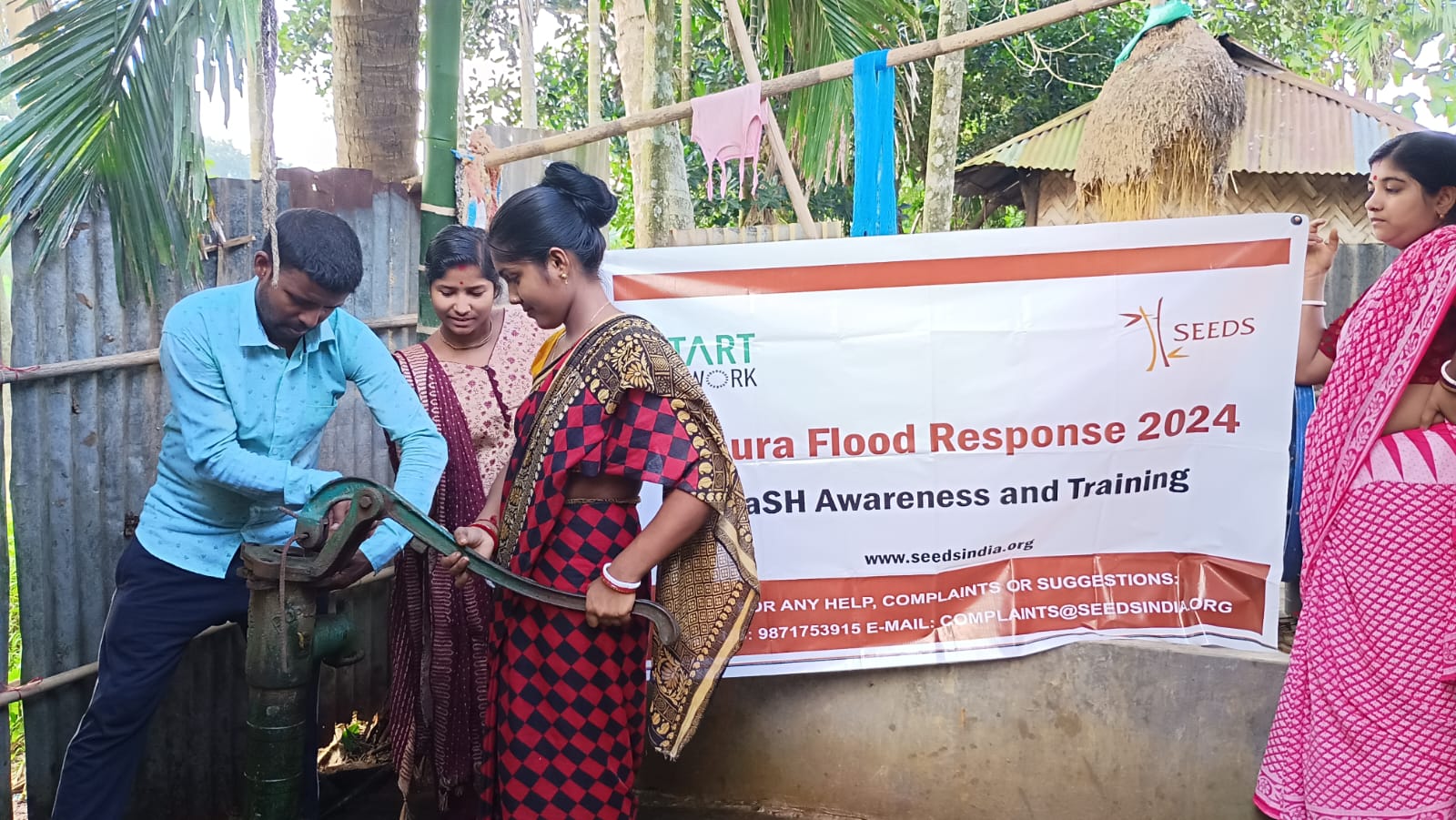
When the Beach Came to Me
As I touched down in Chennai on October 15, 2024, my thoughts were on getting to the beach. After a day spent attending a conference, I had envisioned unwinding by the ocean, enjoying the cool breeze, and dipping my toes in the water. As fate would have it - the weather had different plans that day.
The journey started early that morning when I, along with SEEDS' Director of Programme, Parag Talankar, boarded a flight from New Delhi for a one-day conference at Chennai. The turbulence during the flight foreshadowed what awaited us on the ground. When we landed, the drizzle greeted us - a light, almost refreshing sign of nature. Yet beneath it - the signs were ominous.
Soon, the weather escalated. The conference, originally planned to end at 5:30 pm was rushed to a close by 2:00 pm - due to an impending storm. The urgency in the air mirrored the growing sense of unease. An orange alert had been issued, signalling heavy rainfall, with a red alert looming for the following day. Chennai was on the brink of a potential disaster, and we found ourselves in the middle of it.
Despite the chaos outside, the conference felt like a bubble. Reality hit the moment we stepped out. Driving through streets flooded with water. It was overwhelming – there was water everywhere, drains overflowing. The city seemed to be drowning. What struck me most was the resilience of the people. Chennai did not come to a standstill; instead, it adapted. People navigated the floodwaters with scooters and bikes, finding their way through, while pedestrians waded alongside stranded cars. It was as if the city had accepted these extreme conditions as part of its rhythm.
I couldn't help but draw parallels to other cities like Gurugram and Bengaluru, which also suffer from flooding during heavy rains. However, unlike those cities, people in Chennai pressed on, undeterred. While these cities grapple with urban flooding, the underlying causes are eerily similar—rapid urbanisation leading to the loss of natural water bodies and wetlands, which previously absorbed excess rainwater. Over 80% of Chennai’s land is now under construction, worsening the flooding with every storm.
At one point, our cab driver stopped to refuel his CNG vehicle. As I stepped out, my shoes were quickly submerged in the murky waters, a wave of rainwater splashing over my trousers, possibly due to the vibrations in the still water by the passing vehicles. At that moment, I realised the beach I had hoped to visit - had come to me.
This encounter made me reflect on the work SEEDS does to mitigate such disasters. As an organisation, SEEDS focuses on building resilience in communities vulnerable to the impacts of climate change and disasters. In urban centres like Gurugram and Bengaluru, our efforts include reviving critical water bodies like Wazirabad Lake, Jharsa Pond (both in Gurugram) and the Huvinayakanahalli Lake in Bengaluru —natural buffers that help manage waterlogging during heavy rains.
Our work doesn't stop there. In the Sundarbans, West Bengal for example, we are actively restoring mangrove forests. These mangroves not only shield coastal communities from cyclones and floods but also function as natural carbon sinks, combating climate change at its core. SEEDS’ approach is holistic—we understand that disasters don't occur in isolation. They are exacerbated by environmental degradation, climate change, and unplanned urbanisation.
Chennai's flooding is not an isolated event. It’s a clear message that climate change is no longer a distant problem affecting far-off lands —it's hitting us right where we are. It’s real, immediate, and tangible, reshaping our cities and daily lives. The floods across India serve as a reminder that we can no longer afford to view climate change as someone else's crisis.
This stark reality brought home the importance of not just disaster response but also long-term preparedness and environmental conservation. Our work across India, from urban water bodies to coastal mangroves, aims to build that resilience—helping communities withstand the shocks of a changing climate, and more importantly, thrive in its aftermath.
In the end, it wasn't the beach I had imagined, but the experience deepened my resolve. At SEEDS, we are committed to making sure communities, whether in cities or the Sundarbans, are ready to face the uncertain future, with nature as both a guide and a partner in resilience.
Technical Proposal Manager, SEEDS



Photo Credit: Mitali Vavre
Tripura Floods 2024: How Climate Change and Poor Planning Led to a Catastrophe
The devastating floods in Tripura have laid bare the state’s vulnerability to extreme weather events, with experts attributing this latest disaster to a combination of human-induced climate change and inadequate planning. The floods, which have claimed 32 lives and displaced over 1,49,000 people, are being described as the worst the state has experienced since 1956, resulting in an estimated loss of ₹15,000 crore.
What Triggered the Floods?
A record-breaking 288.8 mm of rainfall was recorded in a single day on August 20, triggering the collapse of already fragile river systems and causing widespread destruction. The districts of South Tripura, Khowai, West Tripura, and Gomati were hit hardest, with South Tripura bearing the brunt of the catastrophe. The intense rainfall led to rivers like Howrah/Haora, Dhalai, Muhuri, Manu, and Khowai breaching their banks. The Manu river in Kailashahar, for instance, surged past the critical level of 23.05 meters, causing alarm among local communities and the administration. This was not an isolated incident; numerous rivers across the state overflowed simultaneously, resulting in floods in dozens of villages, cutting off access to entire communities and triggering landslides in several areas.
Understanding the Scale of the Impact
The most severely affected areas include Bagafa and Belonia in South Tripura, and Amarpur in the Gomati district. Bagafa recorded an astounding 375.8 mm of rainfall, while Belonia received 324.4 mm, and Amarpur 307.1 mm, inundating low-lying regions and destroying homes and agricultural land. Landslides triggered by the relentless rainfall have already claimed seven lives, and the state’s administration is still searching for two individuals who remain missing. The disaster, which began unfolding on August 18, has escalated into a full-fledged humanitarian crisis. Over 38,000 families have been displaced and are now sheltered in 821 relief camps scattered across the state. The relentless downpour and subsequent flooding have not only resulted in loss of life and property but have also dealt a heavy blow to the livelihoods of thousands of families who are now struggling to recover from the devastation.
The Role of Climate Change and Human Activities
Rising global temperatures have altered monsoon patterns, resulting in more unpredictable and intense rainfall. This, combined with heavy rainfall in a short period, led to the severe flooding experienced this year. But climate change isn’t the only reason for the disaster. Human activities like deforestation, building in flood-prone areas, and poor planning have also played a major role. Rivers that used to have space to spread out during heavy rains are now more narrow due to construction. Wetlands that used to absorb excess water have been lost due to encroachment, leaving communities more exposed to flooding.
Moreover, there’s a lack of proper flood management in Tripura. The state doesn’t have enough drainage systems or embankments along its major rivers. Without these, it’s much harder to control flooding. Delays in flood prevention projects and a lack of preparedness have made the situation even worse. The floods in Tripura show how climate change and human impact can combine to create a disaster. It’s crucial that the state adopts better planning and climate resilience measures to protect its people from future floods.
Moving Forward: The Need for Climate Resilience
The catastrophic floods in Tripura are a wake-up call for the state’s administration and policymakers. Building climate resilience must become a priority to safeguard communities from future disasters. This includes restoring degraded wetlands, creating comprehensive flood management plans, and implementing sustainable infrastructure projects that consider the region’s unique topography and hydrology. Additionally, early warning systems, improved disaster preparedness, and community engagement are crucial in reducing the impact of such extreme weather events. The floods in Tripura are not just a natural disaster; they are a consequence of human actions that have disrupted the delicate balance of nature. As the state grapples with the aftermath, it is imperative to recognize the urgent need for sustainable development practices that can mitigate the impact of climate change and protect the lives and livelihoods of millions.
Conclusion
The recent floods in Tripura highlight the urgent need for a multi-pronged approach to disaster management that addresses both climate change and human impact. It’s essential for the state to invest in sustainable infrastructure, restore natural buffers like wetlands, and implement comprehensive flood management plans. By taking proactive steps now, Tripura can build resilience and better protect its communities from future climate-related disasters.
Sources



Rediscovering Hauz-i-Shamsi: A Journey Through Time and Preservation
My first encounter with Hauz-i-Shamsi was during a heritage walk through Delhi in 2011, a journey meant to uncover the layers of history embedded in Mehrauli. Each monument we visited had a tale etched into its stones, a story that whispered through time. Hauz-i-Shamsi, at first glance, seemed like a typical urban waterbody, unremarkable save for a small pavilion at its edge. Yet, as our guide began to unravel its past, I realised how deceptive appearances can be.
The story goes back to the reign of Shamsuddin Iltutmish, a ruler of Delhi. It’s said that he dreamt of the Prophet, who, mounted on a horse, struck the ground with its hoof and commanded the king to build a reservoir on that very spot. The next day, Iltutmish and his advisors visited the site, and to their amazement, they found the imprint of the horse's hoof exactly where it had appeared in the dream. A tank was soon excavated, and the pavilion that still stands today marks the sacred site of this miraculous event. The reservoir, now a serene yet neglected waterbody, was once a hub of religious significance, where the local community gathered for celebrations and rituals.
My next encounter with Hauz-i-Shamsi was far removed from the mystique of ancient legends. It was in the structured setting of a meeting room at SEEDS where the agenda was the rejuvenation of this historic reservoir. Here, the discussions were more technical, focusing not just on the reservoir's historical and religious importance but on the sophisticated water carriage system that once fed it. This system, an engineering marvel of its time, transported water from distant sources to ensure the reservoir’s levels and purity. Unfortunately, as modern Delhi grew and the demand for housing increased, this ingenious system was disrupted. Buildings sprang up, suffocating the reservoir and leaving behind a stagnant pool—a shadow of its former self.
This decline is a familiar story for many of Delhi's urban waterbodies. These reservoirs, once central to life in the city, have been sidelined as piped water became the norm. As we lost our connection to these water sources, we also lost the community spirit that had once maintained them. Encroachments and a lack of awareness about their environmental value have turned these lifelines into afterthoughts, threatening their very existence.
At SEEDS, there’s a deep understanding of the critical role waterbodies like Hauz-i-Shamsi play in urban ecosystems. They regulate the microclimate, recharge groundwater, act as rainwater sinks, and support biodiversity. Ignoring them has had catastrophic consequences, as seen in the flooding that has plagued several Indian cities. Yet, there’s hope.
With support from generous donors, SEEDS is spearheading efforts to restore Hauz-i-Shamsi using nature-based solutions—approaches that work with, rather than against, natural processes. This initiative also aims to revive the park surrounding the reservoir, transforming it into a space where residents can reconnect with this historical and environmental treasure.
Walking through the algae-choked reservoir during the early stages of the project in 2023 was undoubtedly disheartening. The challenges of navigating bureaucratic clearances seemed daunting at first, but as the permissions were secured and the local community began to engage with the restoration efforts, obstacles began to melt away. There was a collective sense that this reservoir, with its rich past, could once again become a focal point for the community.
"Restoring Hauz-i-Shamsi is more than just an act of preservation; it’s a step towards rekindling our relationship with the environment. By breathing new life into this ancient waterbody, SEEDS hopes to inspire a broader movement towards environmental stewardship, especially as we face the challenges of a rapidly warming planet. Delhi's monuments are more than just relics of the past—they are lessons in innovation, resilience, and the harmonious coexistence of human and natural systems. It’s up to us to ensure these lessons are not lost to the relentless march of urbanisation."
Director, Built Environment
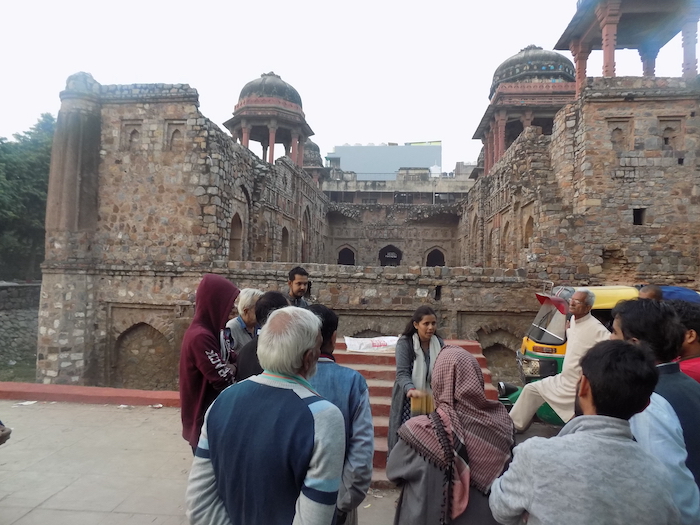



Restoration of school facilities, Wayanad
The night of July 30, 2024, will forever be etched in the memory of Wayanad’s residents. A massive landslide ravaged the beautiful green landscapes of Chooralmala and Mundakkai villages of Meppadi gram panchayat, reducing homes, schools, roads, and plantations to a wasteland of mud and rocks. Hundreds of people lost their lives, and many more were left homeless, as the serene hill district turned into a scene of devastation in a matter of hours. In the immediate aftermath, the government of Kerala acted swiftly, relocating survivors to relief camps and hospitals. Rehabilitation plans were set in motion immediately.
Among the many challenges, ensuring that children's education in the affected areas continued without long interruption was a key priority. Two schools—Government High School Vellarmala (GVHS) and Government Lower Primary School (GLPS) Mundakkai—were severely damaged in the landslide. To avoid a prolonged disruption in the children's education, the authorities relocated the students to Government High School (GHS), Meppadi.
Converting Spaces for Education
To solve the space issue, the local administration decided to repurpose the Panchayat community hall into temporary classrooms for GLPS Mundakkai, while additional teaching spaces were to be created at GHS Meppadi for the GVHS Vellarmala students. SEEDS was tasked with this responsibility of accommodating the additional students in an already functioning school.
The road ahead was anything but smooth. Both from a renovation and a perception point of view. After all people now associated the community hall and the school’s classrooms as temporary mortuaries. These spaces, therefore, needed to be cleaned, repainted and prepared for classes. The work was assigned to our technical team at SEEDS by the Chief of Programs, who was overseeing the relief efforts on the ground.
On August 18, 2024 our team arrived in Kalpetta town after a three-hour drive from Calicut. When we visited GHS Meppadi the next day, the school was still functioning as a relief camp, with the classrooms filled with survivors. A teacher, Mr. Shahnawaz, guided us through the school and underscored the urgency of the situation.
The enormity of the task soon became clear. With the District Collector setting a firm deadline to start classes on September 2, 2024 we had less than two weeks to complete the work. The pressure was immense, but the support from local authorities, especially the Panchayat President who supported the work in every possible way, kept us going.
Witnessing the Destruction
During our time in Wayanad, we visited the landslide-affected areas. The sight was both tragic and humbling. Damaged houses stood eerily empty, with staircases leading to nowhere, silent witnesses to a once-thriving community. We also visited the remnants of the two schools that had been destroyed, their mud-covered walls bearing the scars of the disaster. Seeing this devastation firsthand helped us better understand the trauma these children had endured. It fuelled our resolve to create a positive and welcoming environment for them at GHS Meppadi.

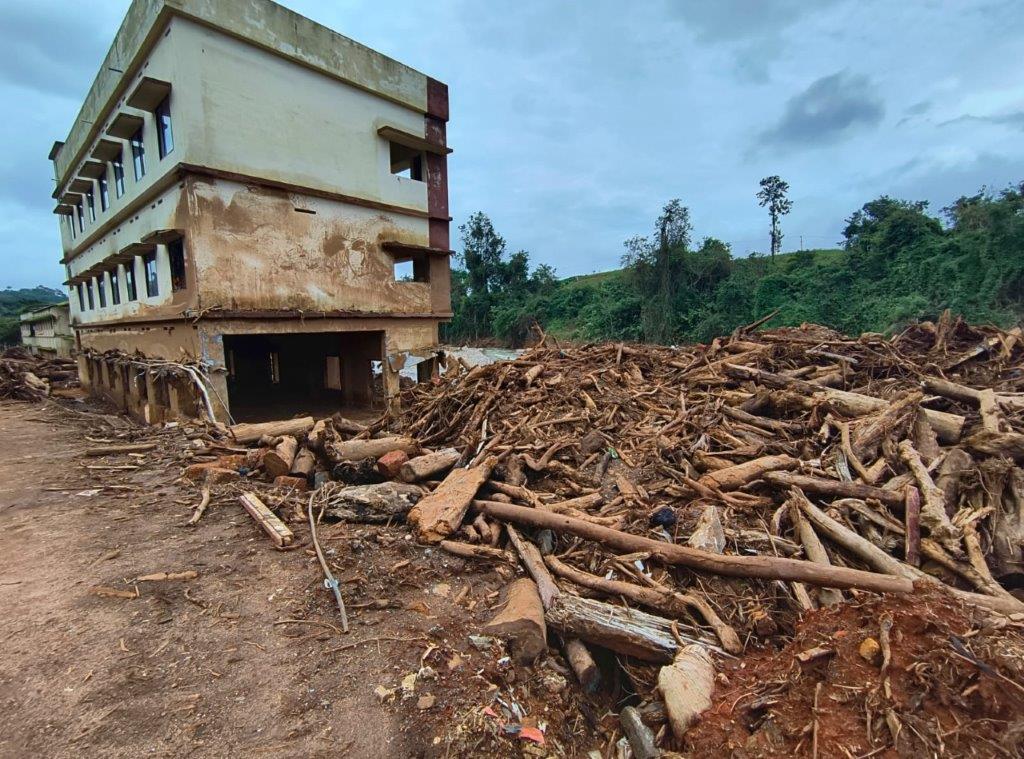
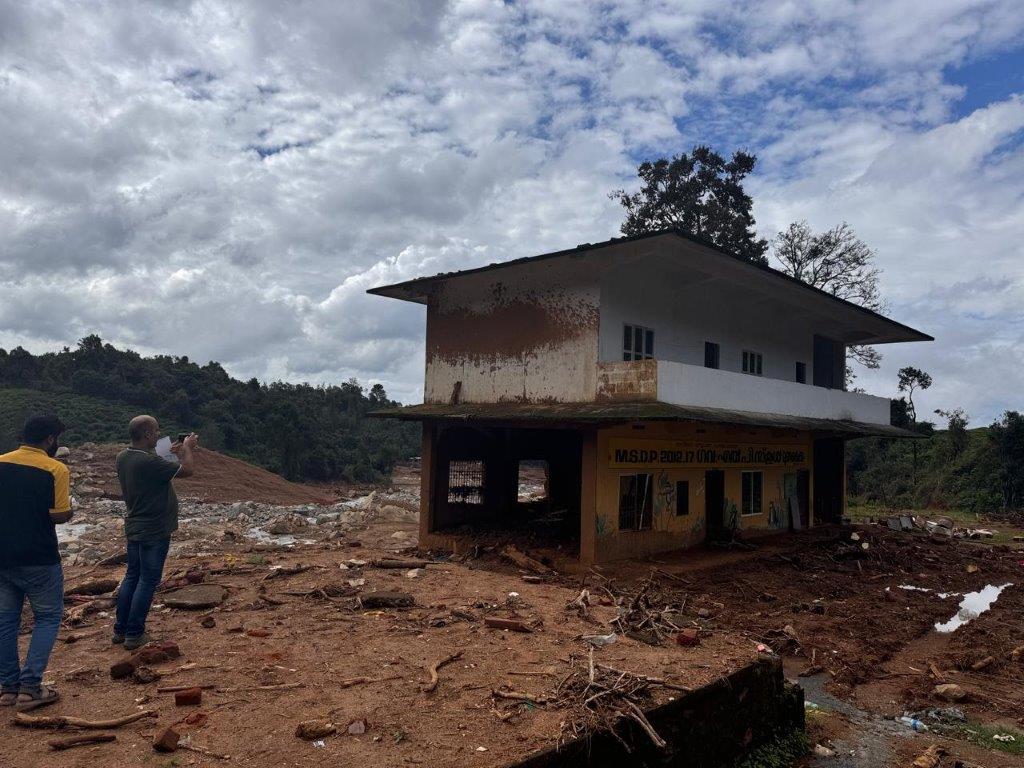
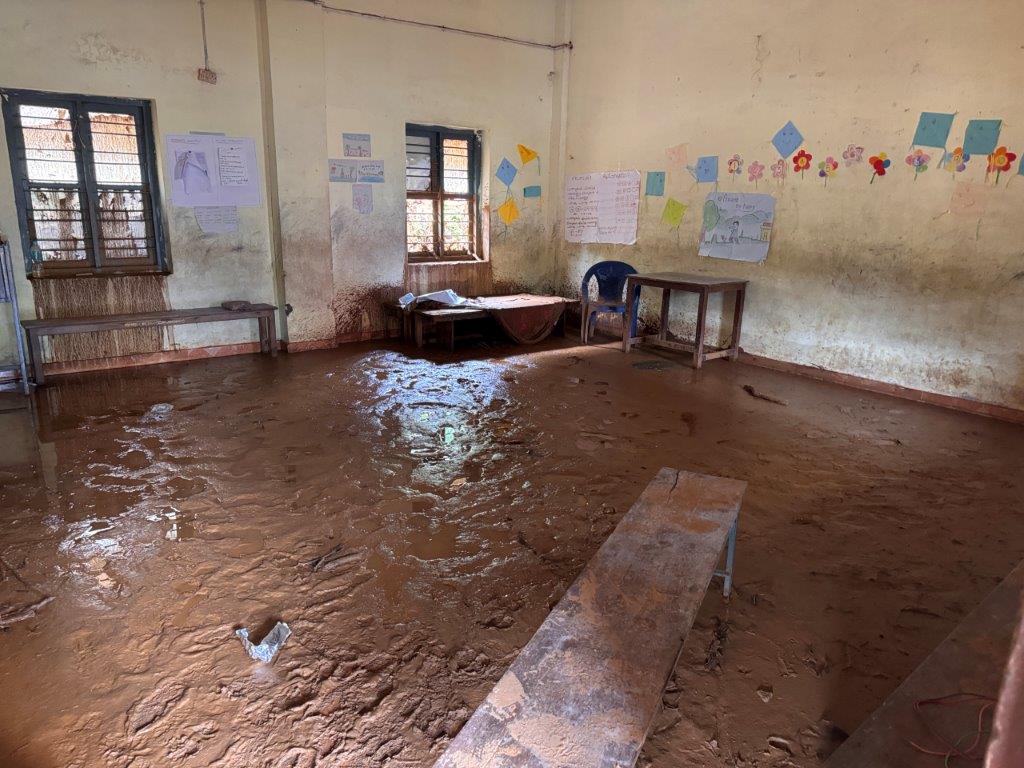
Racing Against Time
By the time we had secured contractors and workers for the task, we had just one week to complete the work. In addition to repainting the classrooms and installing partitions to create teaching spaces, we received several urgent requests: repair the kitchen, develop a handwash areas, and supporting the teachers with art materials to brighten up the classrooms for the children.
Despite the overwhelming workload and tight deadline, we couldn’t ignore these requests. We knew they were vital for creating an environment where the children could feel safe and start healing from the trauma they had experienced.
The work was completed on September 1, 2024 a day before the children were scheduled to arrive. This achievement was made possible only through the tireless efforts of the workers, who worked late into the night to ensure the school was ready on time. Their determination to provide children with a good environment after such a tragedy was truly inspiring.
A Milestone in Recovery
Our efforts didn’t go unnoticed. The state's Education Minister praised SEEDS for its contribution to the recovery process, presenting us with a memento of appreciation. The Panchayat President, too, expressed his gratitude and promised continued support for future upgrades to the school.
While this is only the first step in a long journey of recovery, completing this milestone has instilled confidence in both us and the local administration. There is still much to be done, but together, we are moving forward—one step at a time.
The story of Wayanad’s recovery is one of resilience, hope, and the unwavering spirit of a community determined to rebuild what was lost. And at the heart of it all is the belief that, with the right support, even the most broken places can be restored, and life can begin anew.


When being prepared helps plan better at a local scale
Did you know that your rooftop could potentially tell you a story? What if it could tell you about your house type, its robustness, and its vulnerability to extreme weather and hazards? Our Microsoft AI for Resilient Cities Project does exactly this. With our cutting-edge Artificial Intelligence (AI) models, we can assess houses’ vulnerability scores based solely on the roof type from high-resolution satellite imagery.
As India experiences the 2024 ‘emergency season’, this AI model comes in handy for communities and governments to derive information ahead of challenging incidents such as heatwaves, floods, cyclones, and earthquakes. At SEEDS, over the past three years, AI-led and community-centric interventions through ‘Beat the Heat’ and ‘Under the Umbrella’ campaigns have been initiated through the various iterations of this model. Using results from our AI models, our ground teams have extensively disseminated localised and hazard-specific advisories and warnings to vulnerable communities.
This model has been applied for floods, heat waves, and earthquakes, in some of the most marginalised regions of cities such as Delhi, Ahmedabad, Bhubaneswar, Chennai, Puri, Gaya, Gangtok, and Dehradun, and is now being deployed on ground for implementation and verification. Previously tested on Cyclones Yaas and Tauktae (2021), the model was also implemented through our ‘Beat the Heat’ campaigns in 2021 and 2022. In areas such as Mayur Vihar and Yamuna Khadar in the National Capital Region, our team organised #beattheheat quizzes, issued advisories to 25000+ families, and four houses were selected to implement interventions on the basis of the AI model’s scoring.

Model piloted in cities falling under Core Heatwave Zones (CHZs) such as East Delhi, Nagpur
Most of this work has been evolving since 2020 when SEEDS, in collaboration with Microsoft, developed ‘Sunny Lives’, a game-changer AI model that prepared communities in advance of impending – potentially disastrous events.
Over the past years, this model has been instrumental in enabling the most marginalised populations, vulnerable to multiple hazards, for instance in Delhi, where heat waves, floods, and earthquakes can affect these houses severely. Our model identifies and analyses the risks faced by these houses and populations, mobilises stakeholders, issues advisories, and brings forward solution-based interventions that not only mitigate their risks but also offer relief to the vulnerable populations.
Hereon begins the most exciting phase of the project, with the model now being continually improvised, and the results being utilised to understand and deploy the interventions to the most marginalised houses and populations. In these alarming times of the manifestations of climate change beginning to affect even the safest of groups, the Sunny Lives model brings a welcome and assuring initiative to not only reduce the impact on underserved communities, but also to use ‘AI 4 good’.

The SEEDS team for Microsoft AI four Resilient Cities

The SEEDS team on ground with localised advisories
When the flood waters recede, there is so much to be done!
SEEDS has been working in Assam for more than a decade now. Through my regular travels, there are some changes that I have been seeing on the ground that make me wonder how to tackle the challenging complexities of this geographically vulnerable area that is now seeing more frequently recurring flooding.
One clear change that I see, is that highways get inundated after the rains subside, making travel and daily life exceedingly difficult. The Barak Pass, which usually was not badly affected due to flooding is now annually submerged, and this has been continuous for the past five-six years.
The sensitive district of Karimganj, a town approximately 76 km from Silchar Airport, has been grappling with severe flooding that has left an adverse impact on its residents and infrastructure. Bordering Bangladesh, the recent inundation in Karimganj, in the months of June and July lasted for days, causing significant disruption, particularly in low-lying areas where flood water will take close to 20-25 days to recede. Apart from Karimganj, the other severely affected districts are Nagaon and Dhubri.
On my recent trip in early July this year, when we drove directly to Karimganj what we witnessed was that access to villages was cut. With highway roads being built higher, the homes of people living in low-lying areas were completely submerged. People were using bamboo rafts and boats to access what remained of their homes and fields and returning to the relief camps. They put thermocol boxes in the middle of their rafts and boats to transport goods or fish and poultry.
A total of 16 districts and 49 revenue circles have been affected by the 2024 Assam floods that include Biswanath, Cachar, Dhemaji, Dhubri, Dibrugarh, Goalpara, Golaghat, Hailakandi, Kamrup, Kamprup Metro, Karimganj, Majuli, Morigaon, Nagoan, Nalbari and Sivsagar.
As part of the SEEDS India flood response team, it took us close to three hours from Silchar to reach the most affected area of Suprakandi Gram Panchayat in the Karimganj district of the State. This gram panchayat was critically affected and 100 percent of the population was affected. This area has very few civil society organisations on ground. With panchayat elections yet to be held, this area needs all the support it can get. SEEDS is on the ground working to identify those most vulnerable.
While information indicated that 75 percent of flood water levels had receded, on the ground in low-lying areas water remained knee-to-chest level high. In these places, it will take around 20-25 days for flood waters to recede from homes and agricultural fields.
In some places, villagers were saying, that because of the recently built national highways being raised so much and there being no sluice gate once the flood waters come there is no way for it to drain out. We also heard from community that the Barak Valley never had so much water, but in the last five to seven years, it has increased. While in 2022, it rained much more than this year, all the locations are the same as they were earlier with at least one to two feet more of water.
Livelihoods, shelter, and property damage assessments are crucial in understanding and addressing the community's immediate and long-term needs. The on-ground assessment identified chlorination of hand pumps and dug wells, hygiene kits, child-friendly spaces including the hygiene needs of adolescent girls and women. Safe delivery spaces for pregnant women and psycho-social support for affected community members were also highlighted.
Communities are also desperately searching for clean drinking water, rations (rice and dal), milk and infant food for children, medicines, shelter, non-food items and hygiene kits. With rainfall and humid situations continuing, the high prevalence of vector-born diseases also necessitates the need for mosquito nets. Torches or lanterns, precautions to prevent snake bites, as well as fuel for cooking are a priority for communities here.
Livelihoods too have been severely affected. Agricultural areas that are flooded have no mechanism to drain out the water. It will take up to the next summer for the flood waters to evaporate and only then the land can be ready for cultivation. Those with livestock are looking for fodder too.

Schools, unfortunately, have not been spared too. The floodwaters have severely affected educational facilities, disrupting learning and further complicating the community's recovery efforts. Amidst these challenges, teachers have bravely continued their work, by focusing on compiling reports detailing the economic impact of the floods.
Despite these hardships, the resilience and solidarity of the people of Karimganj shine through. Community members have come together to support one another, demonstrating remarkable strength in the face of adversity. However, the road to recovery remains long and arduous, requiring sustained efforts from both government agencies and non-governmental organizations (NGOs) to provide timely relief and rehabilitation. Alongside, given the nature of these recurring disasters preparing communities to anticipate will be important.
As Karimganj navigates through these challenging times, raising awareness and garnering support for their plight becomes crucial. Initiatives focusing on flood mitigation, infrastructure improvement, and enhanced disaster preparedness are essential to safeguarding the community's future against recurring disasters.
For the moment efforts and attention are focused on the relief work in Karimganj. As we did in Cachar last year, building preparedness during the rehabilitation phase of our work will be critical.


Why we must never forget the Gujarat earthquake
The year 2024 began with the tragic news of the Noto Peninsula earthquake in Japan. Even for a country as prepared as Japan, the incident brought to fore how communities experience suffering and desolation following such a disaster. It also immediately brings back painful memories of the Gujarat earthquake on India’s 52nd Republic Day, January 26, 2001.
Why is it important to look back at learnings from 2001? Today with raising interconnectedness of poverty, climate vulnerability and hazard events, the challenge is how we ensure communities retain the agency to chart their recovery journey and be able to take proactive action for future events. There is an urgency to build resilient and sustainable communities across boundaries towards disaster and environmental stewardship.
For the Global South, recovery post the 2001 Kutch earthquake in Gujarat has served as an important case study. The recovery programme is great example of a ‘whole-of-society’ approach where the State leveraged partnerships with institutions, multilateral agencies, and civil society organisations to super-charge community led recovery.
SEEDS was closely associated with the housing sector, where a house-owner led recovery programme brought speed, cultural acceptability and efficiency in the use of resources. The State, CSOs, technical certifying agencies and donors aligned themselves to agreed protocols and standards that led to coordinated response. Not surprisingly, the success of this approach to housing recovery has been adopted in many other States in India.
My five year engagement with the recovery process that started 3 days after the earthquake has been transformative in the way it has shaped my thinking and that of SEEDS in the last twenty-plus years. In situations where we are having to simultaneously having deal with scale, diversity, sensitivity of time and not at the least the trauma of suffering, the role of partnerships among multiple institutions becomes crucial.
It comes down to basic common denominators that allow open value creation among partners and define interaction protocols. In one of our many partnerships, giving affected communities the agency to make choices and final decisions was an agreed objective that defined the nature of relationships among the aid providers. In another intervention, putting a cap on the quantum of assistance that can go to households with similar damage profiles prevented ‘oases of prosperity’ getting created.
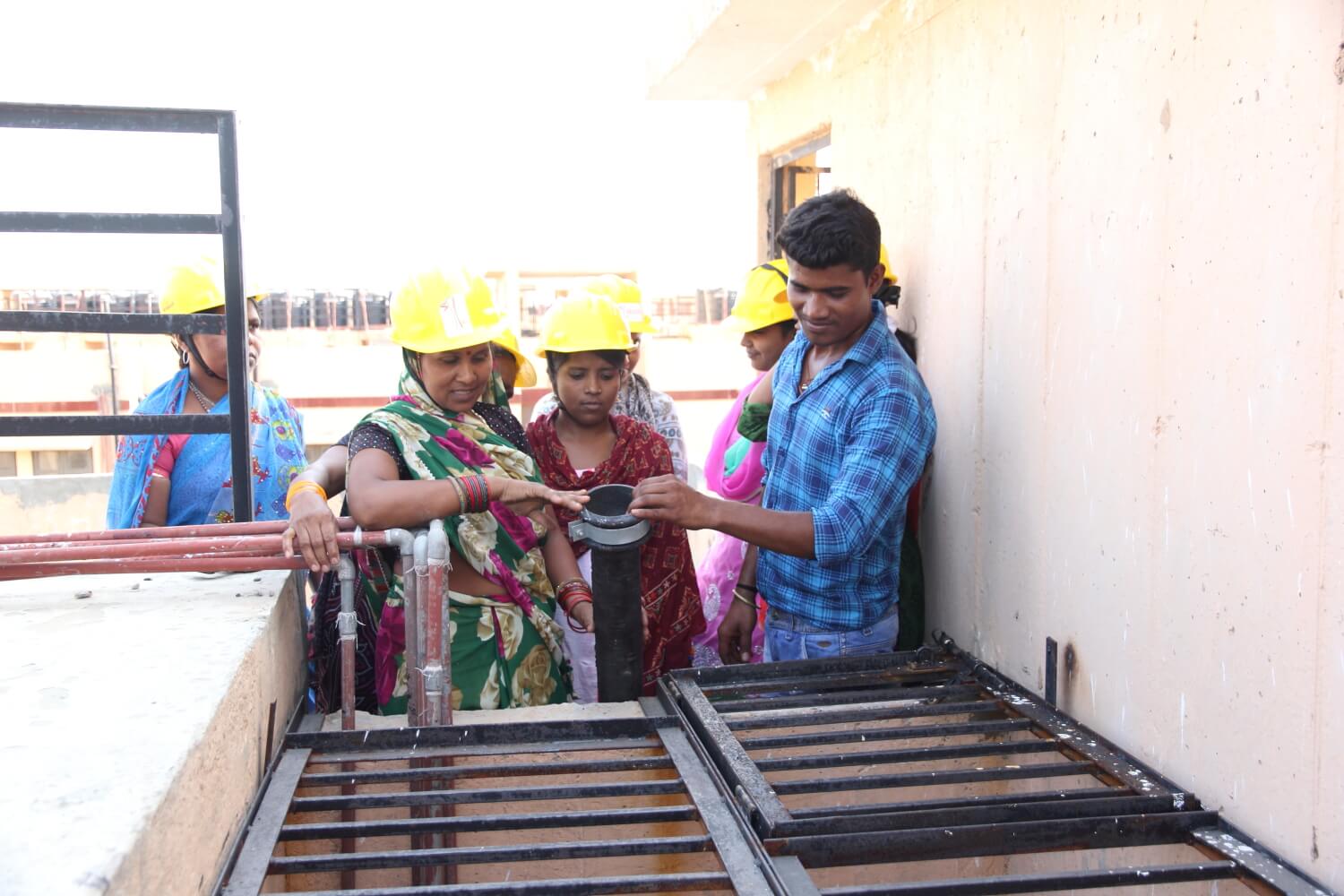
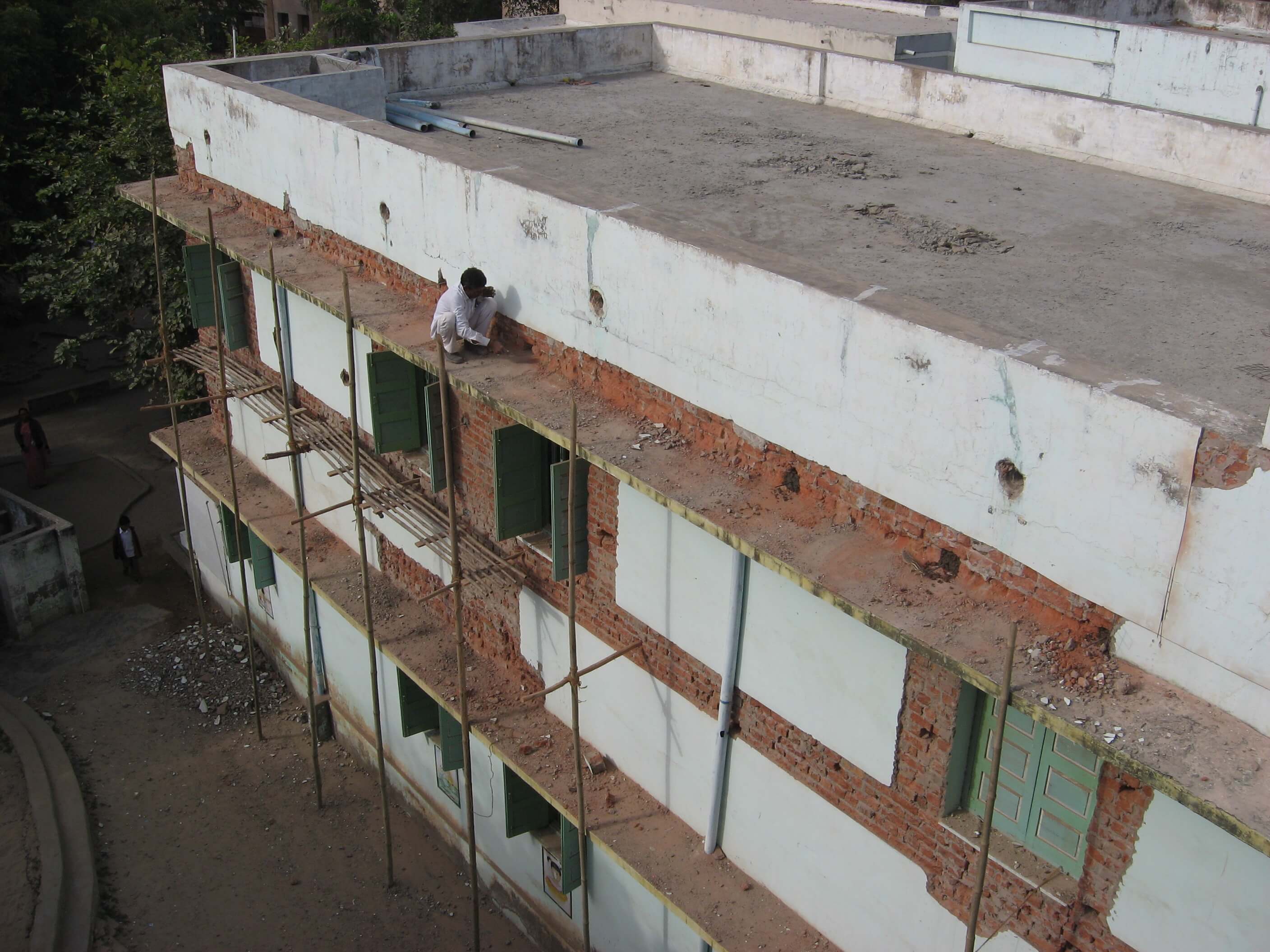

Often, just as disasters are forgotten, so are these partnerships. SEEDS has, however, stayed with them. In fact, over the years we have nurtured and redefined some of these partnerships in response to changing challenges. These partnerships have taken a life of their own becoming strong influential networks that have brought about policy shifts while unceasingly learning from new experiences.
In Japan, India and in many other parts of Asia – devastating catastrophes such as the Noto and the Kutch Earthquake in the same month 23 years apart are sad reminders of the work that needs to be done pro-actively in areas prone to disasters. We need to go beyond just structural interventions, to investing in lasting partnerships and networks that potentially have far greater capabilities in alleviating suffering when nature isn’t kind.










